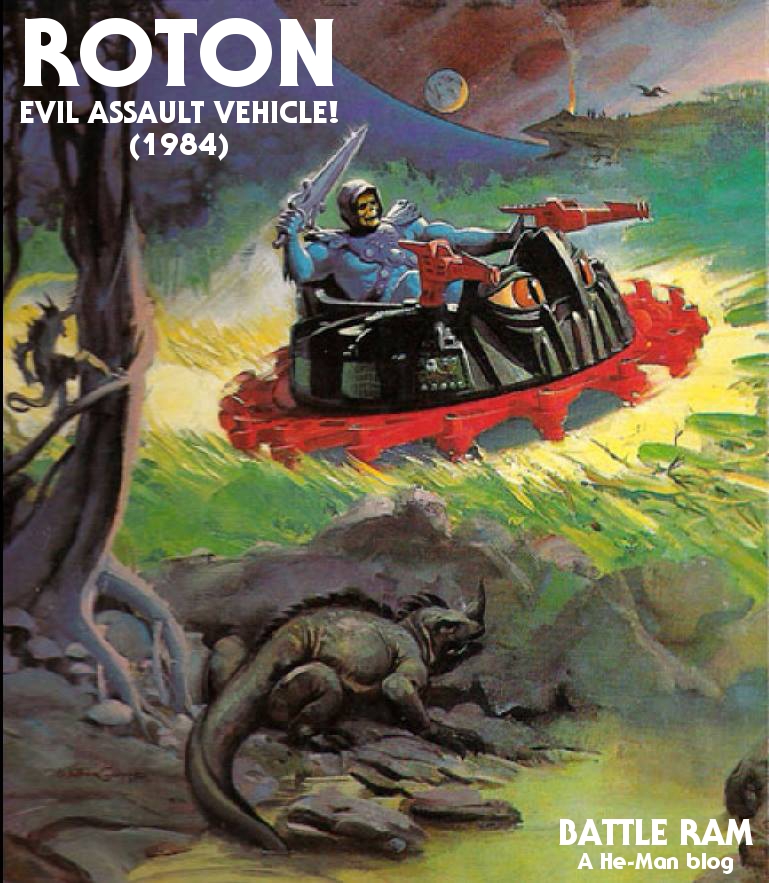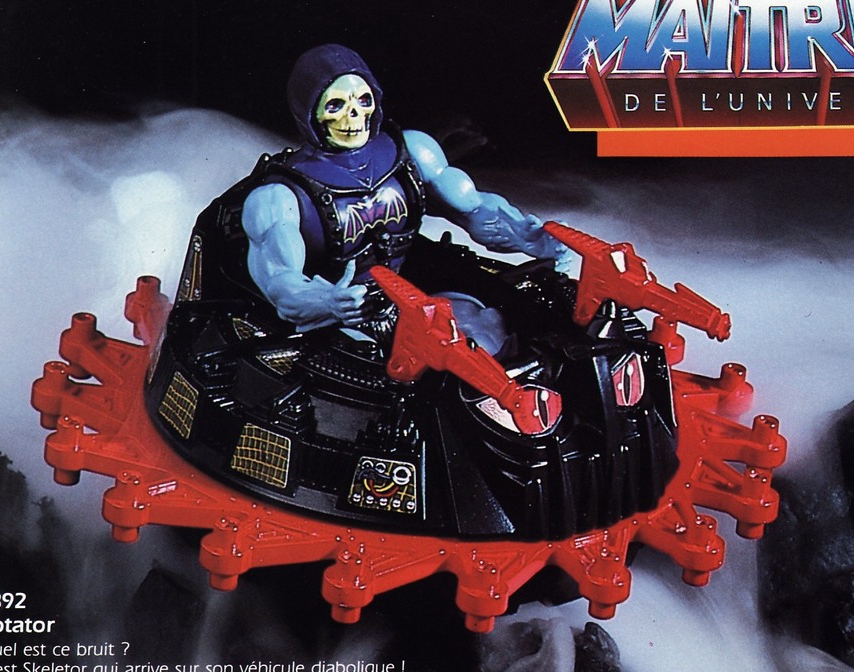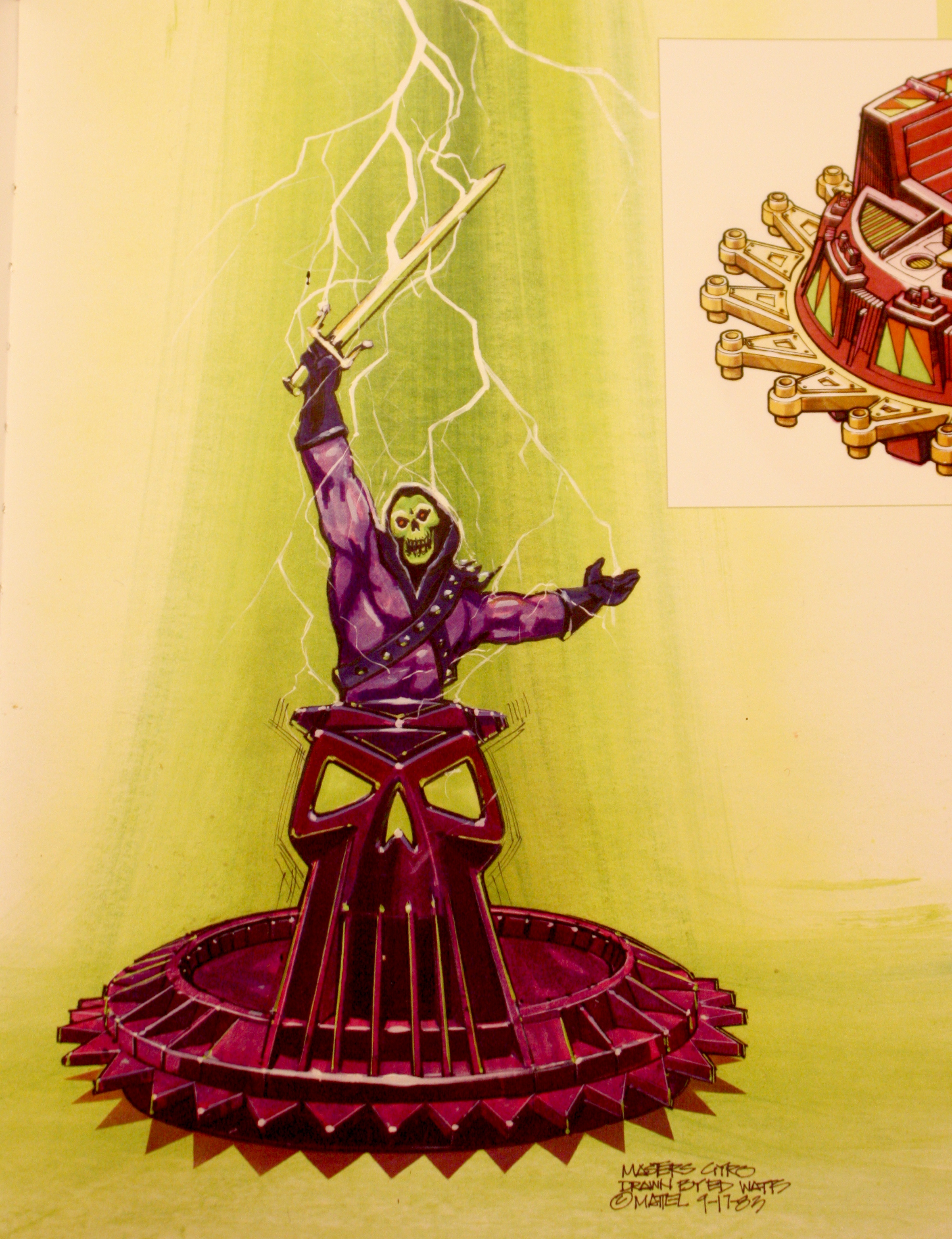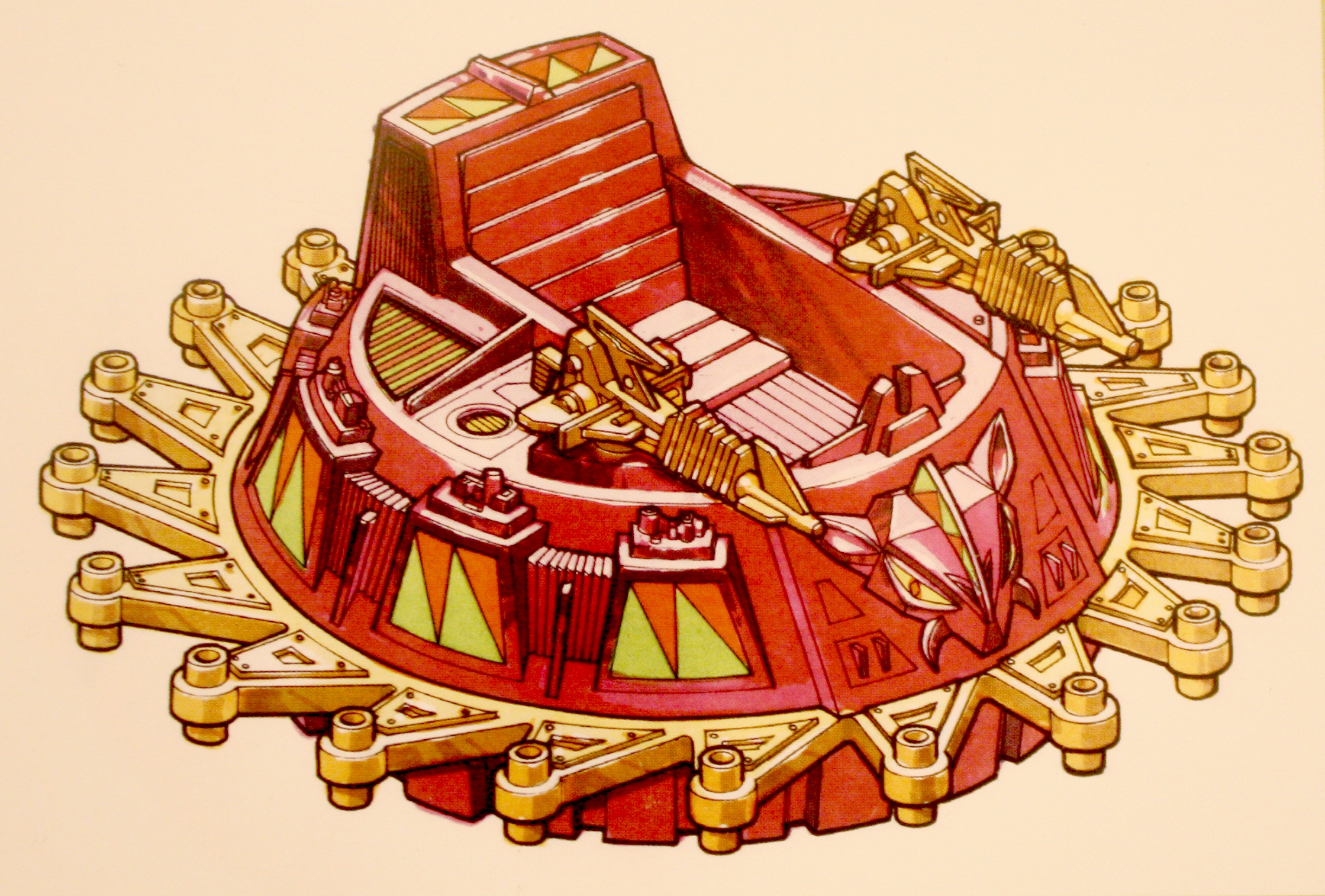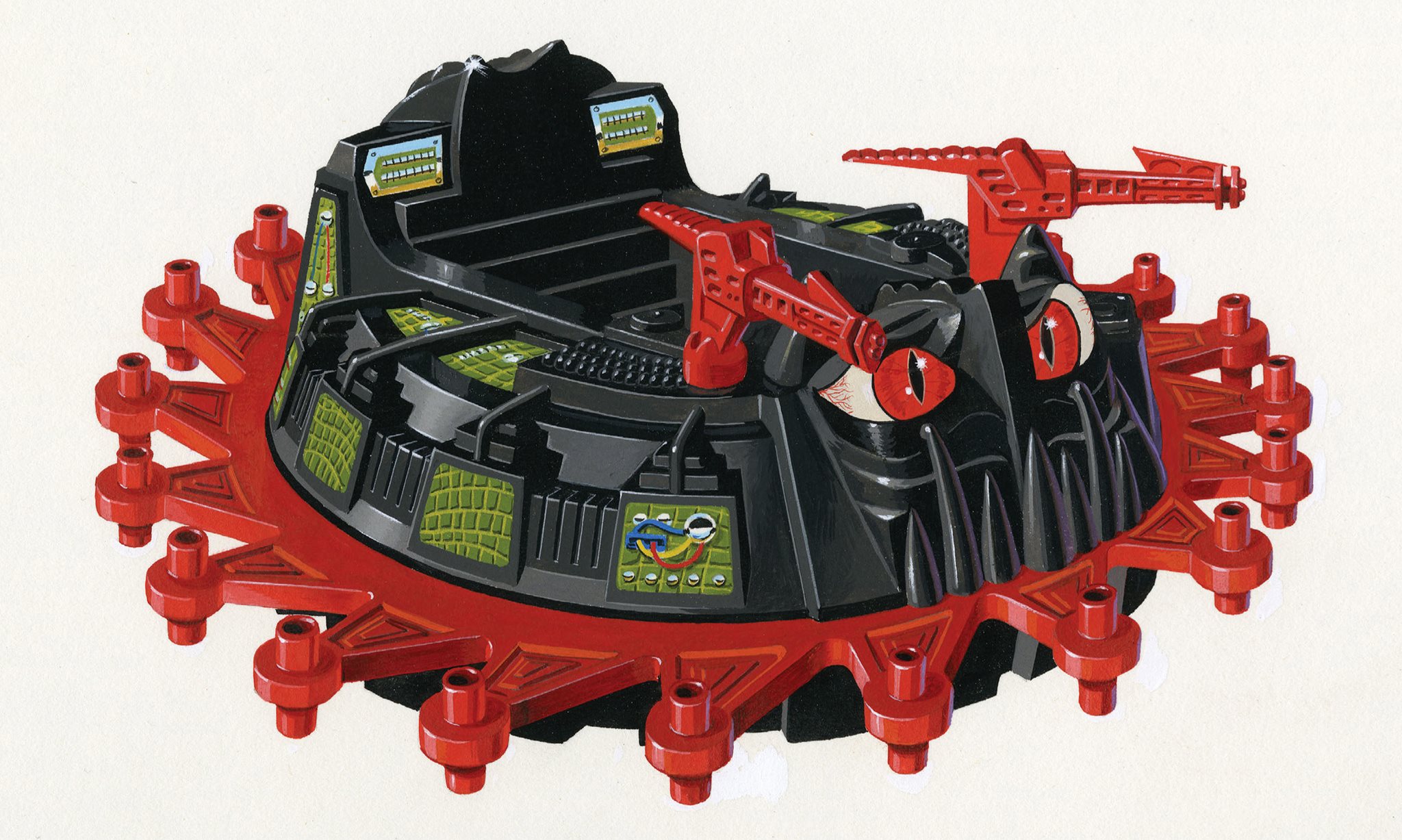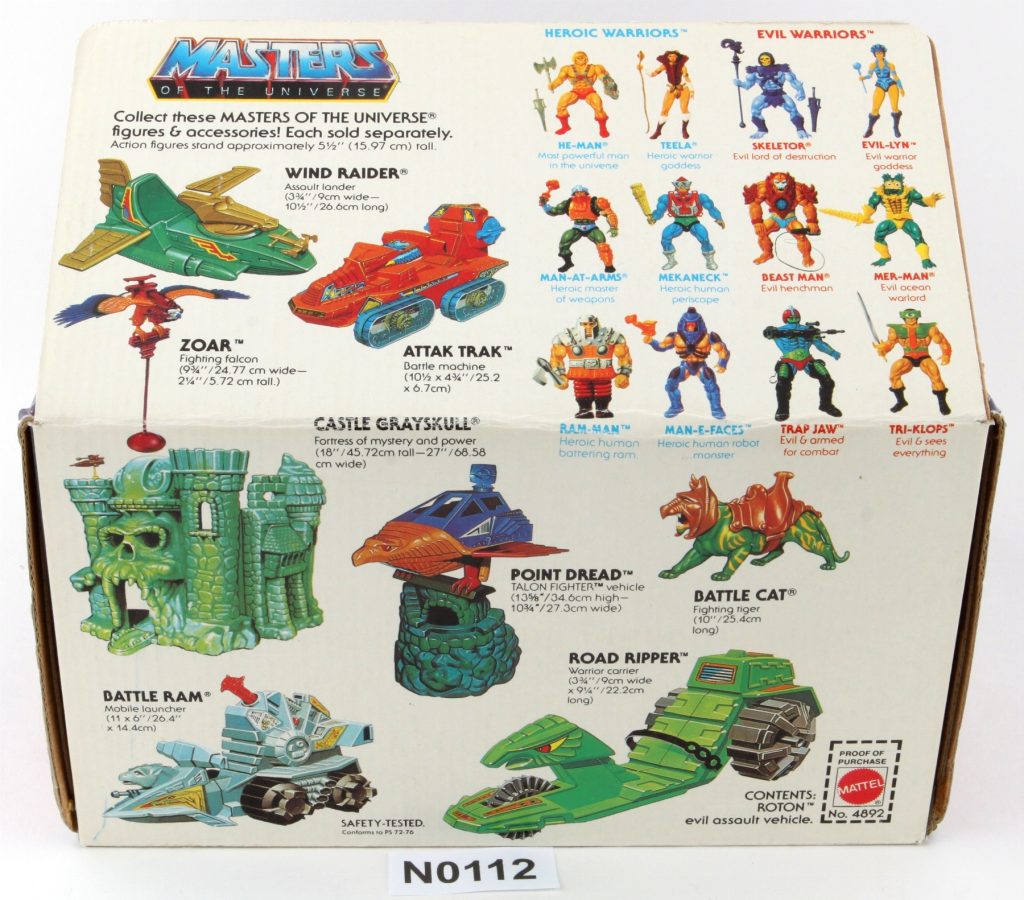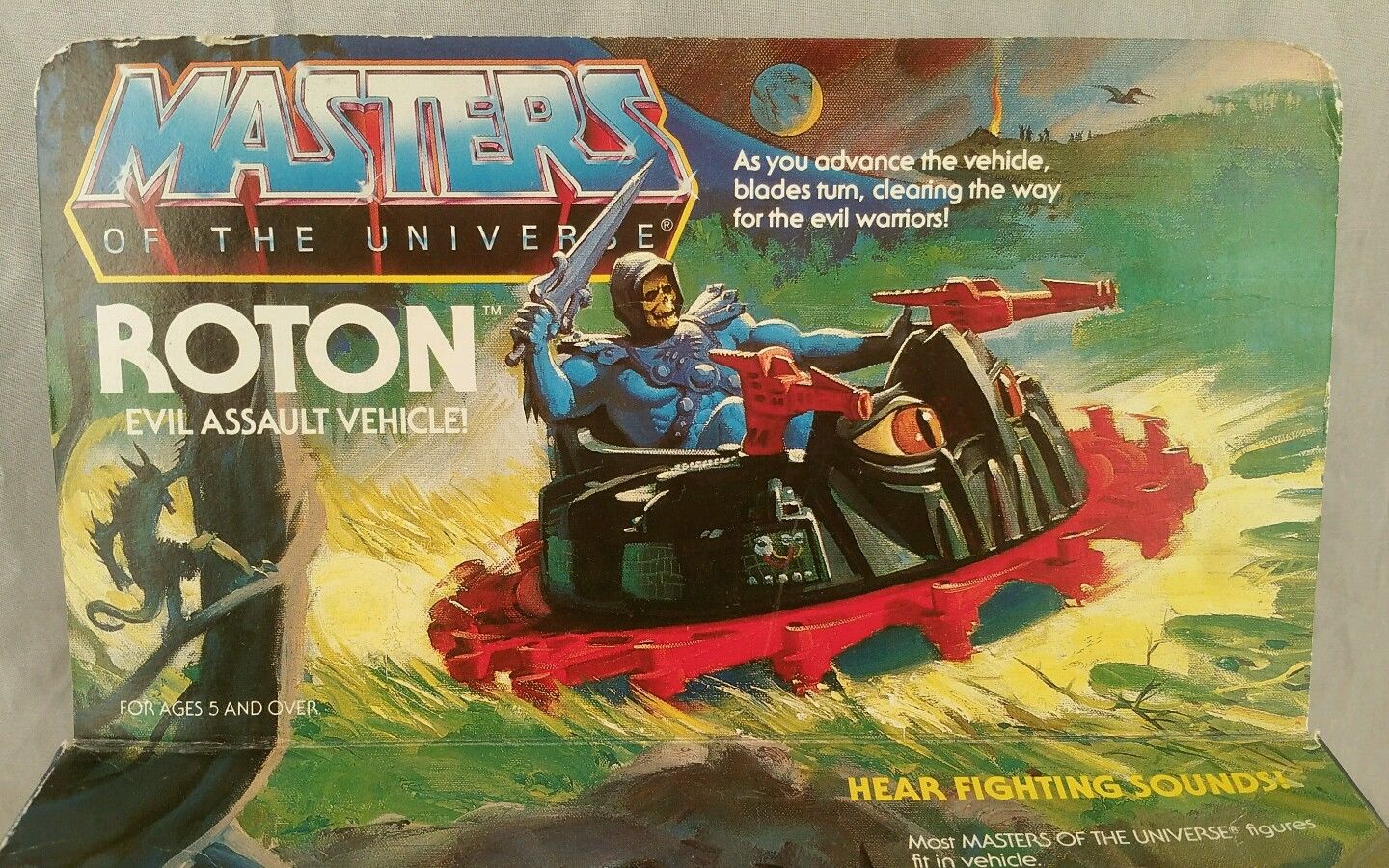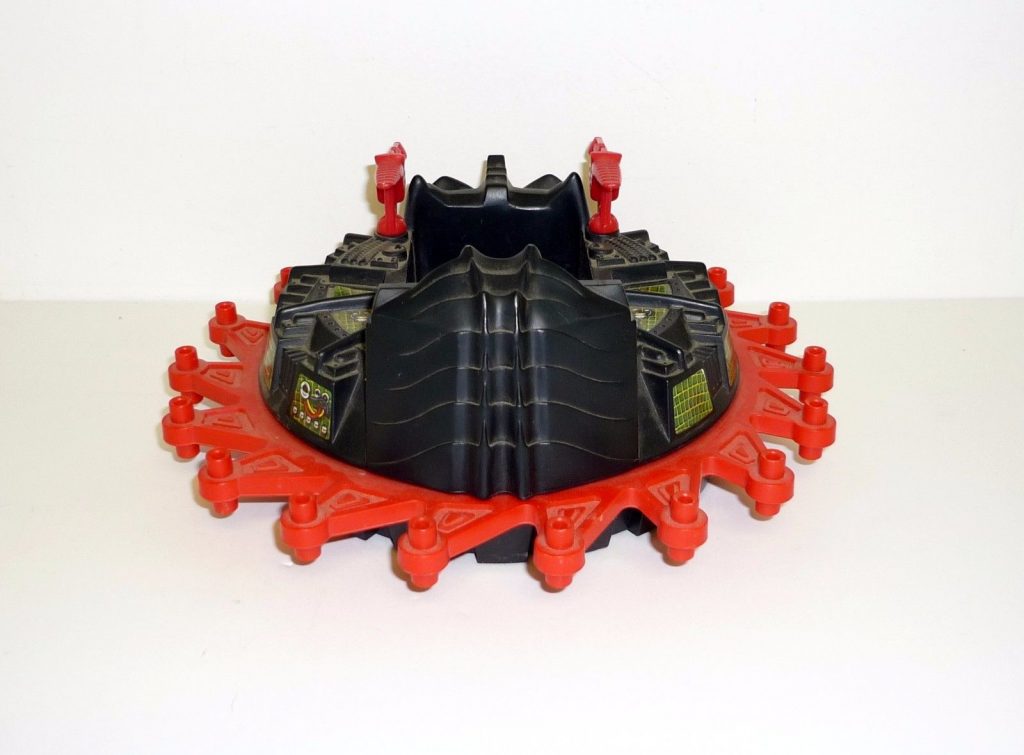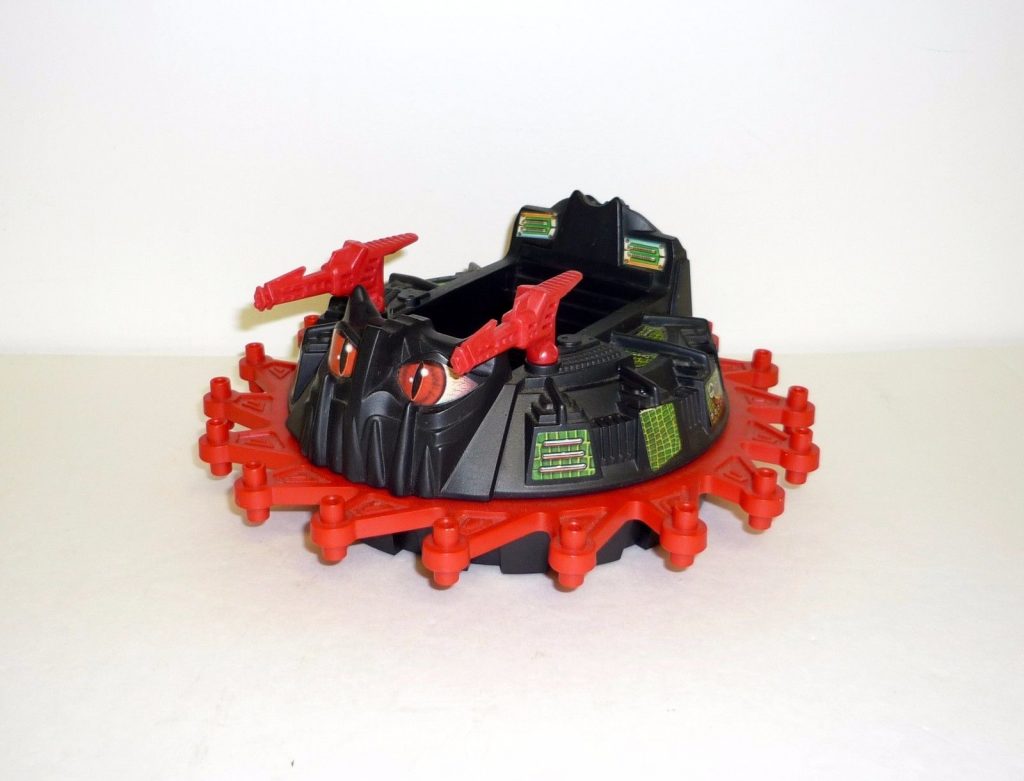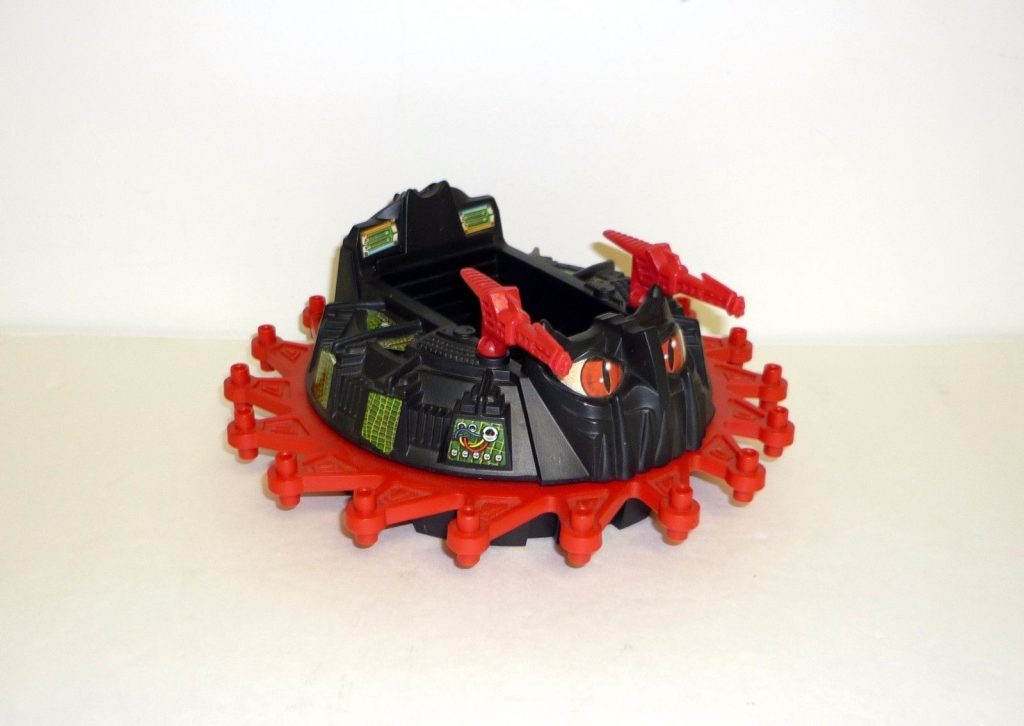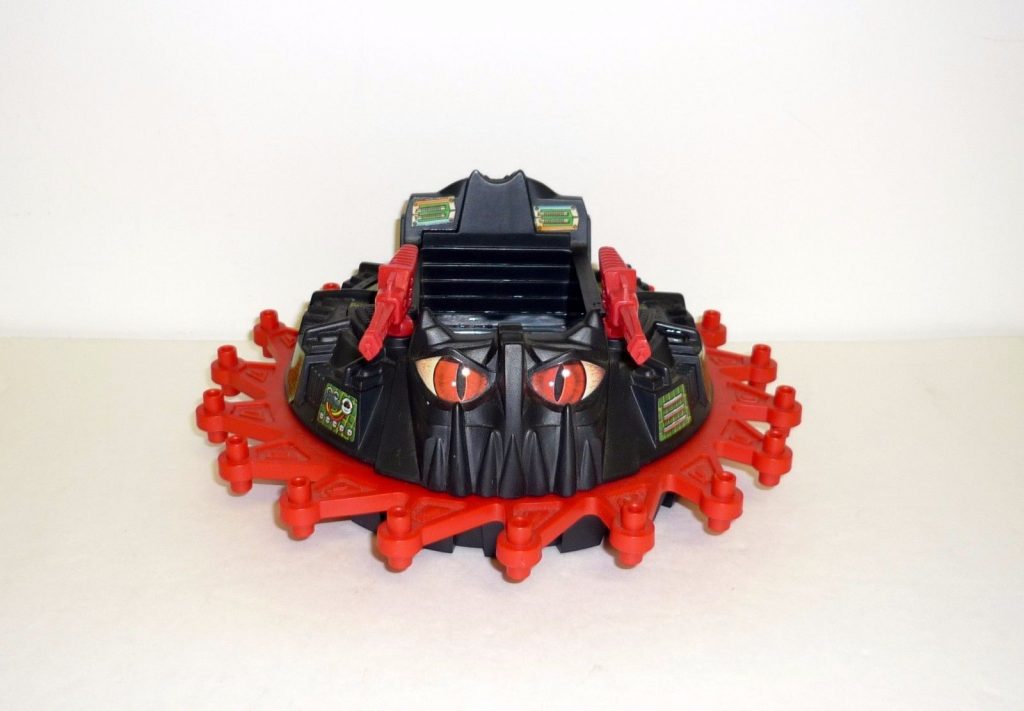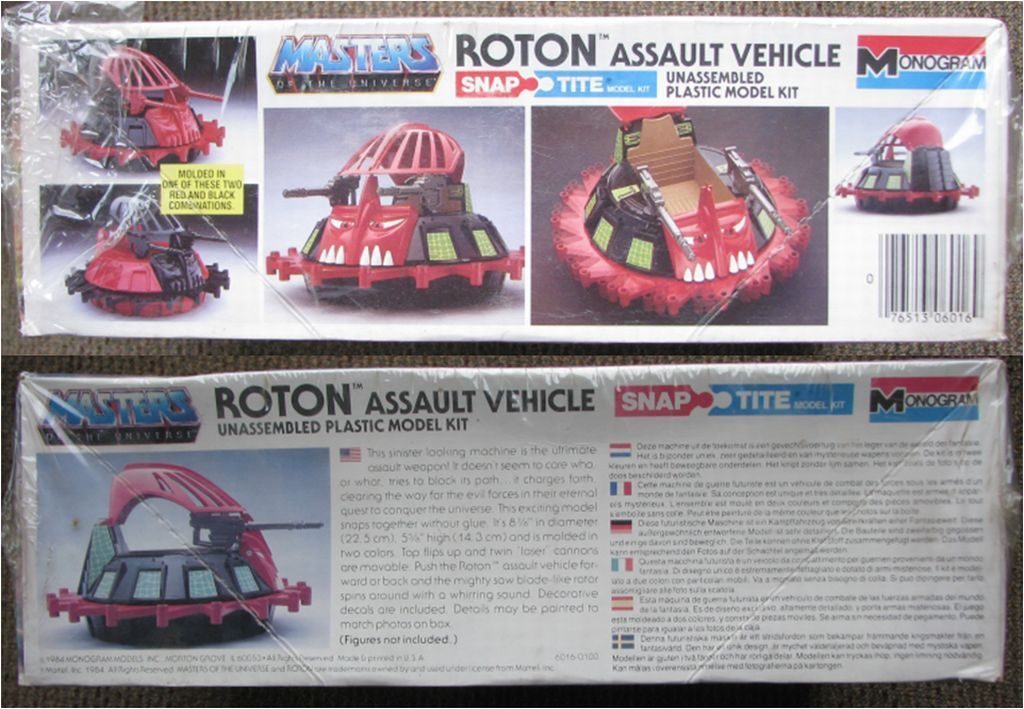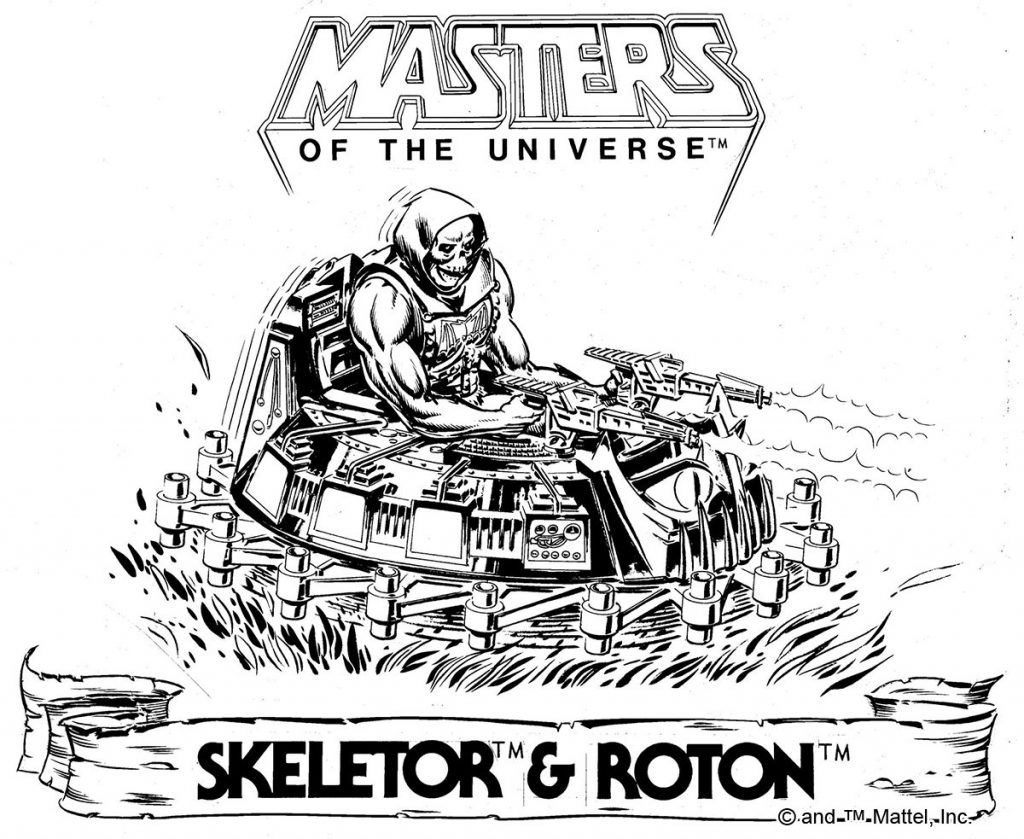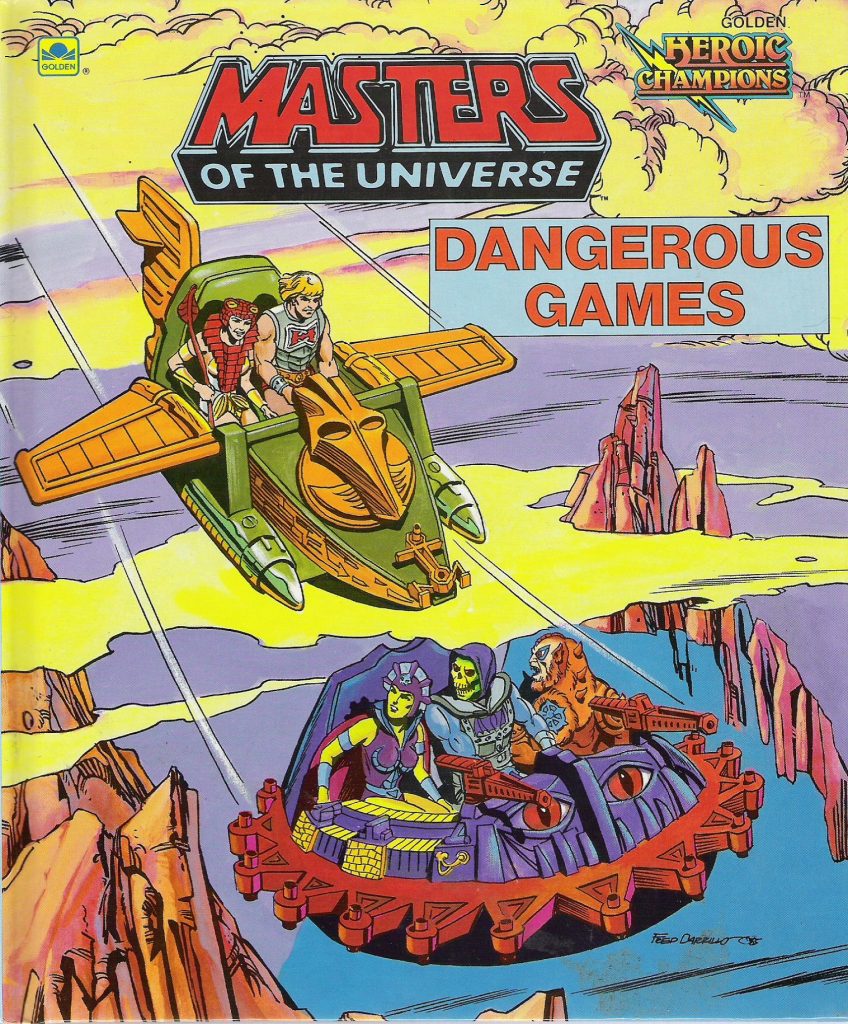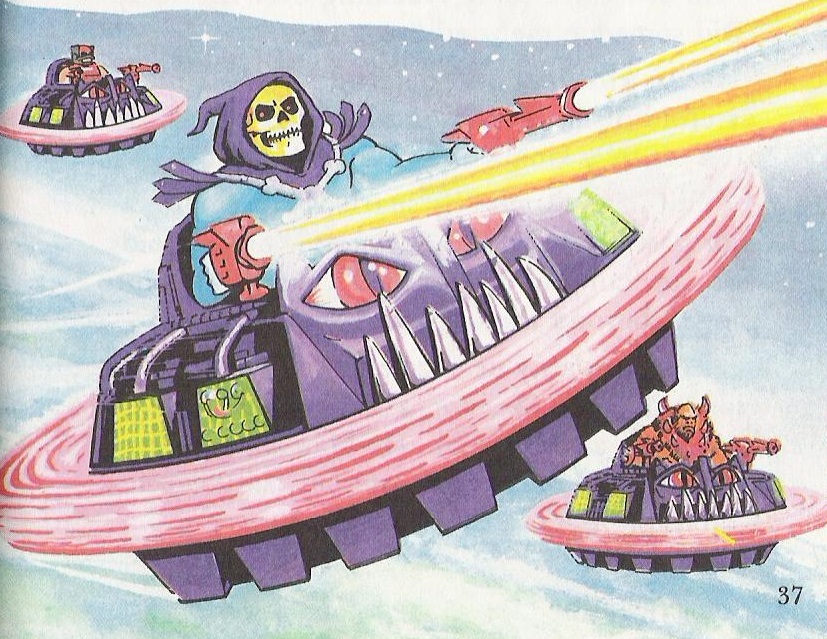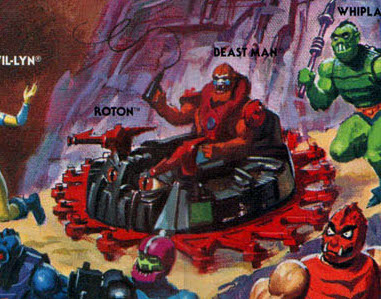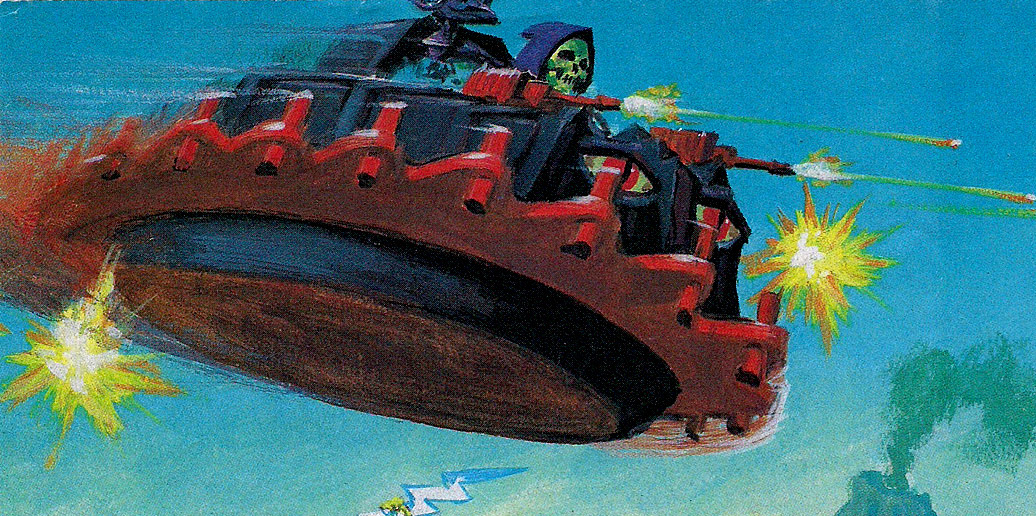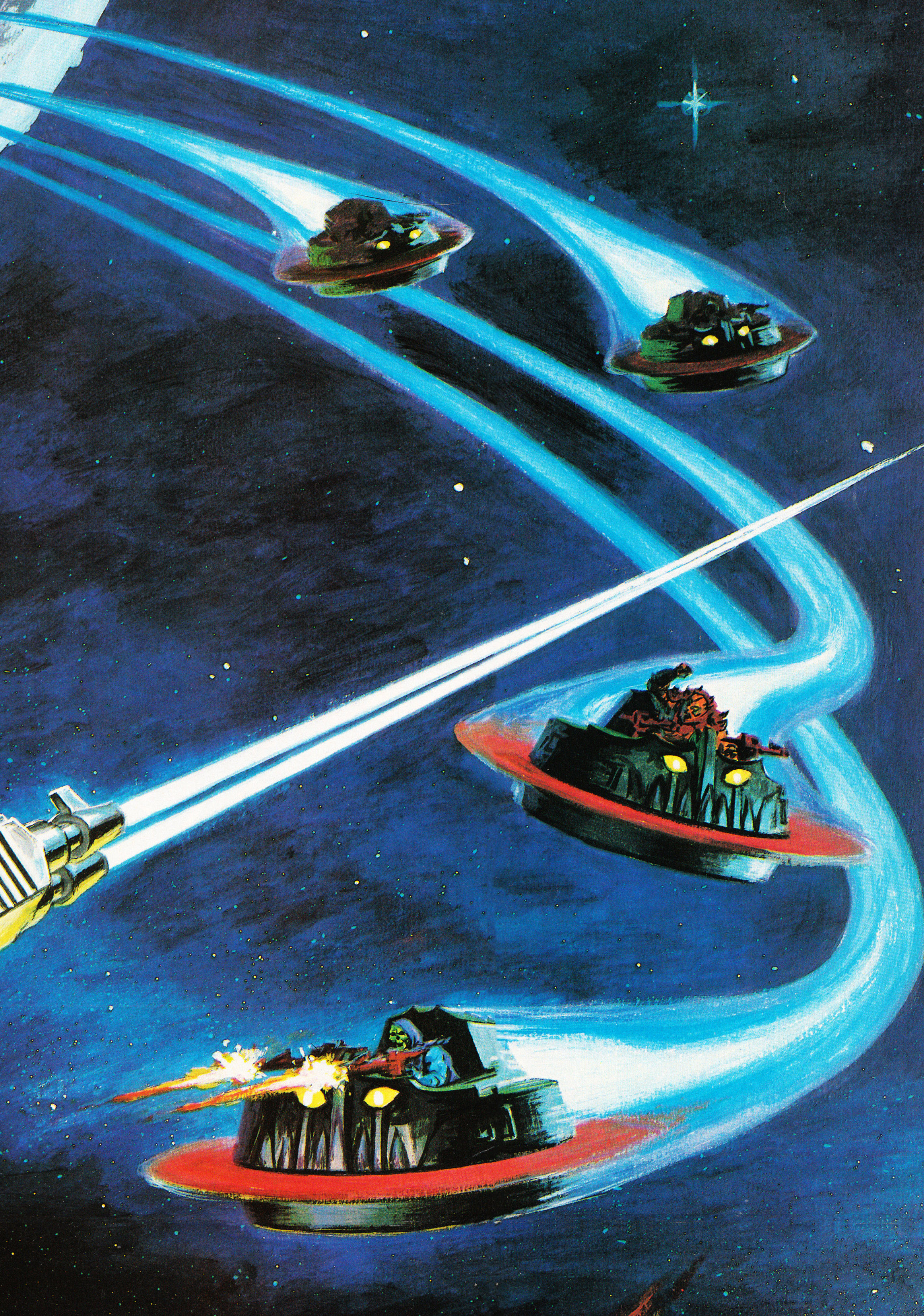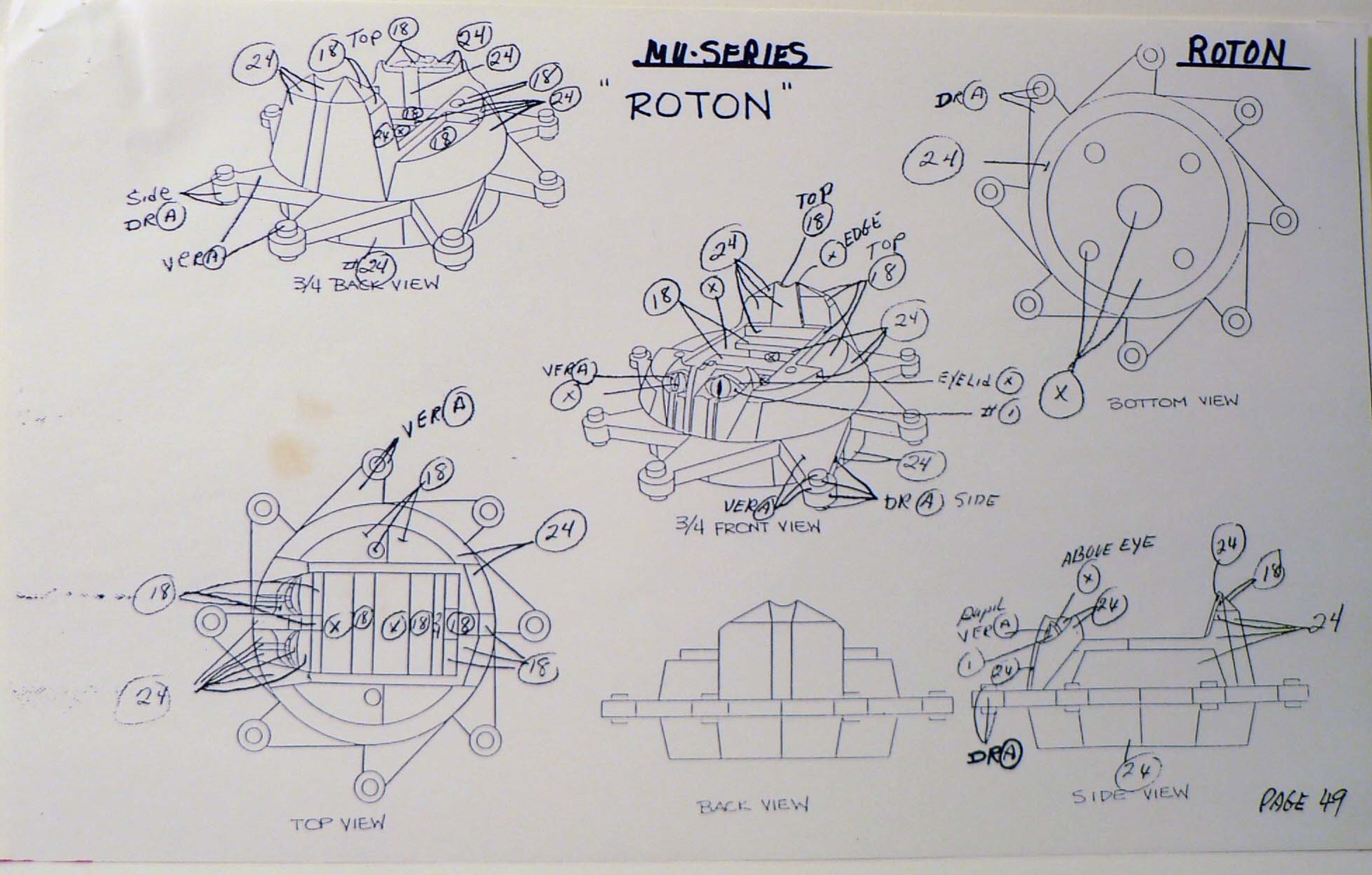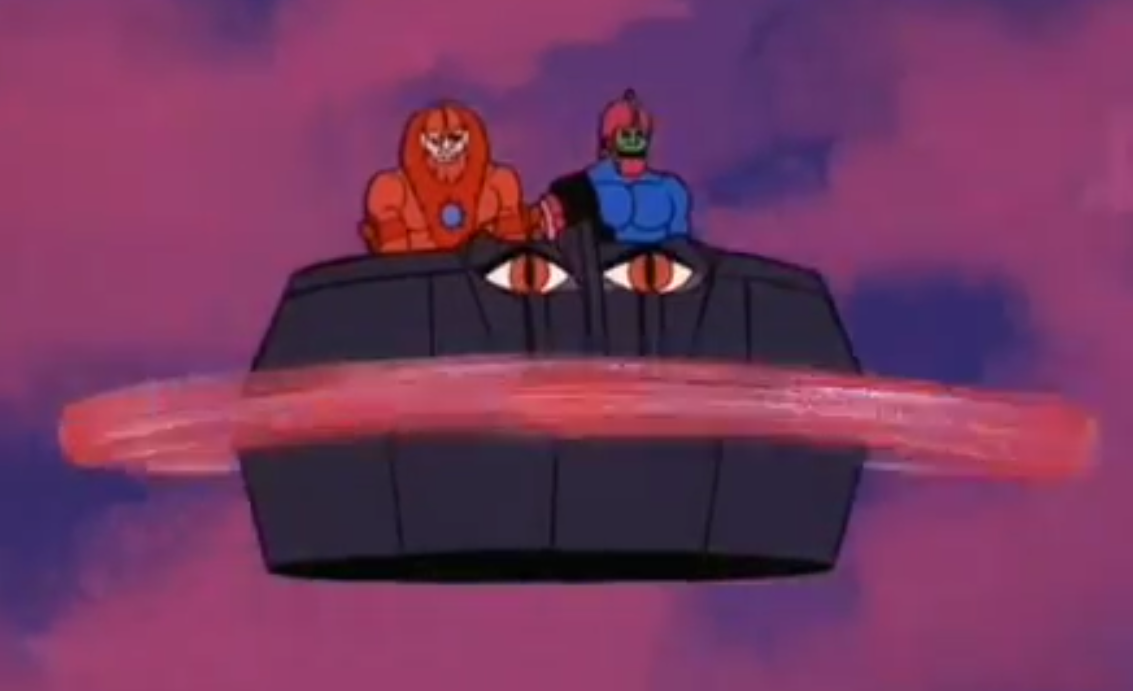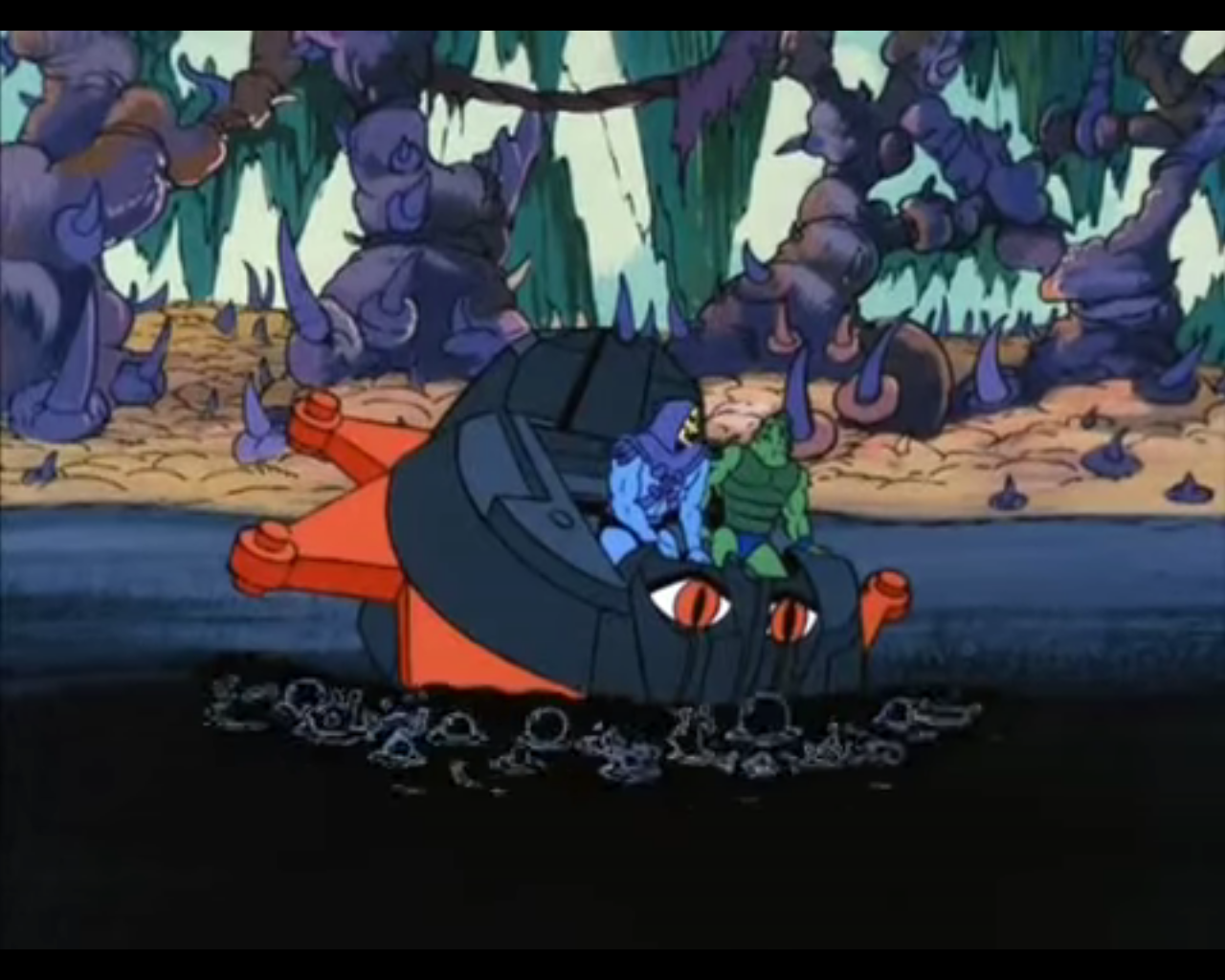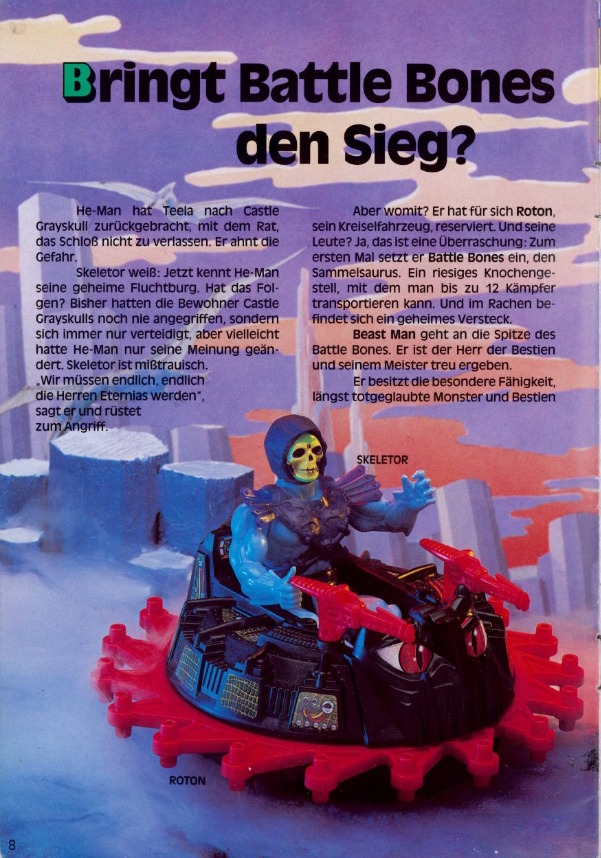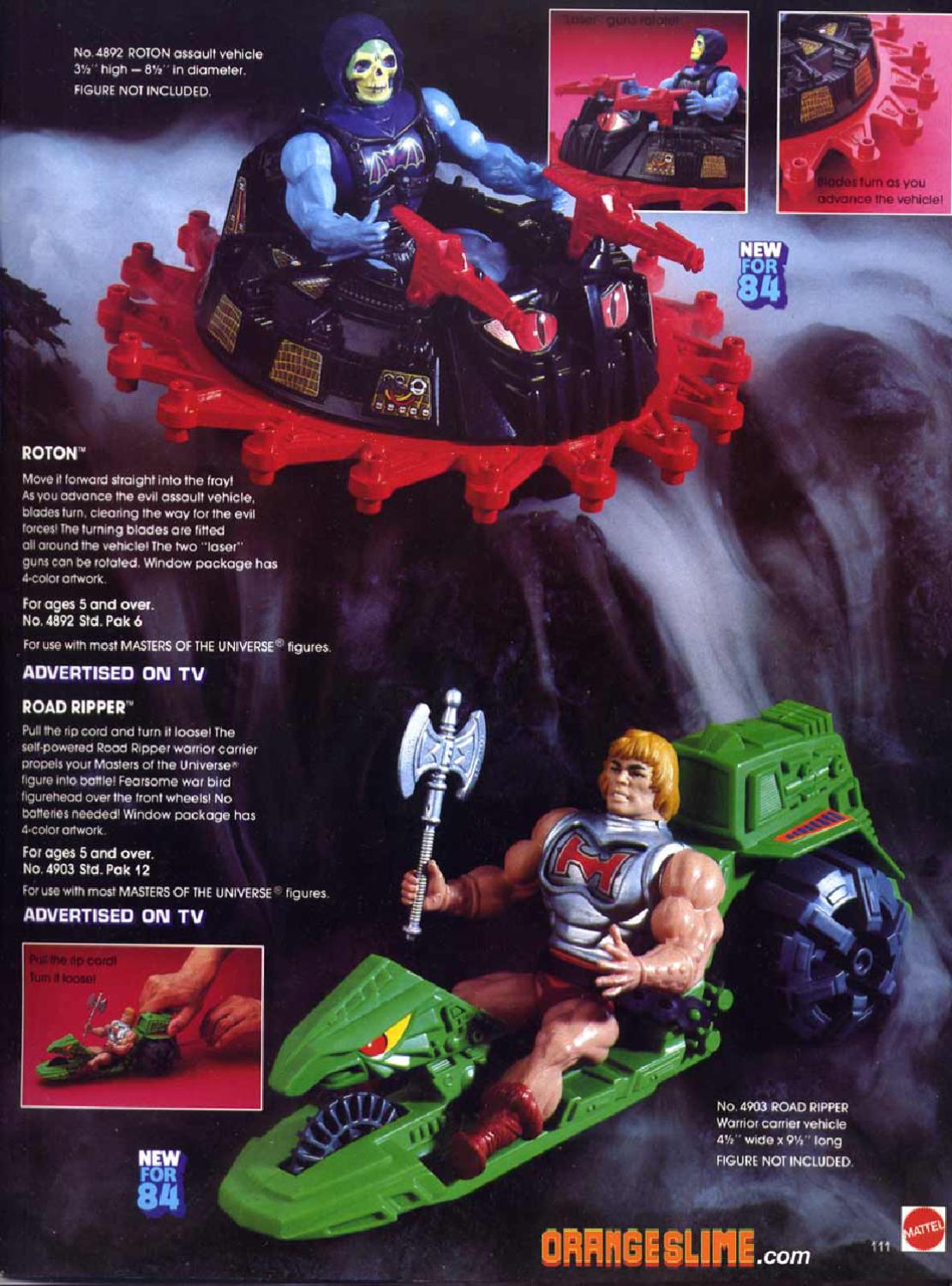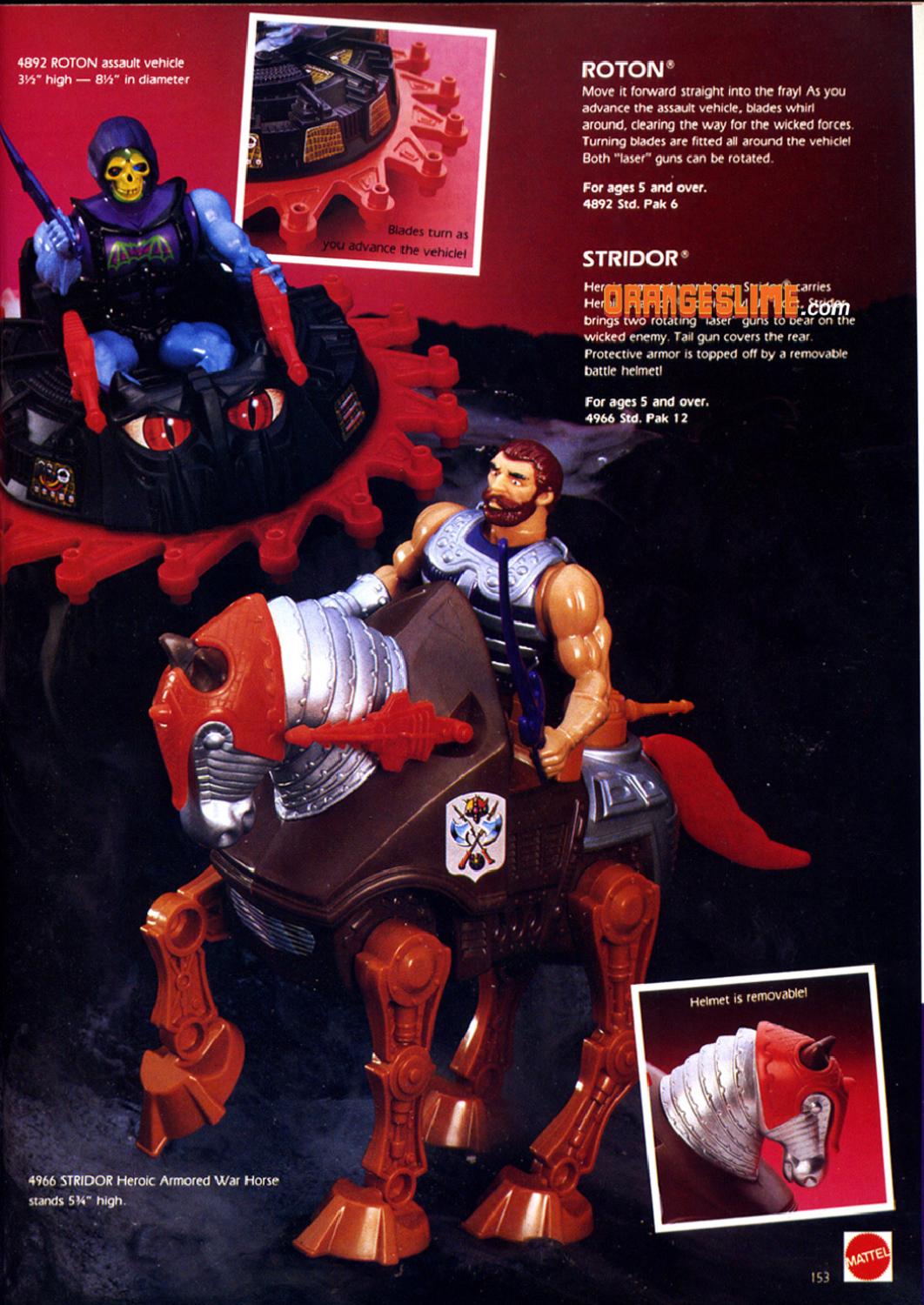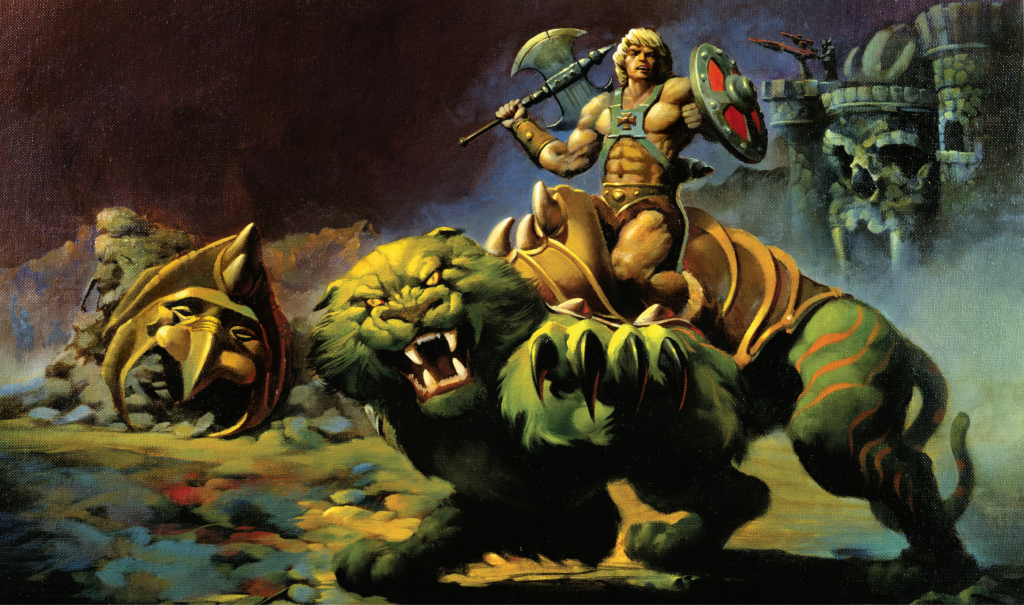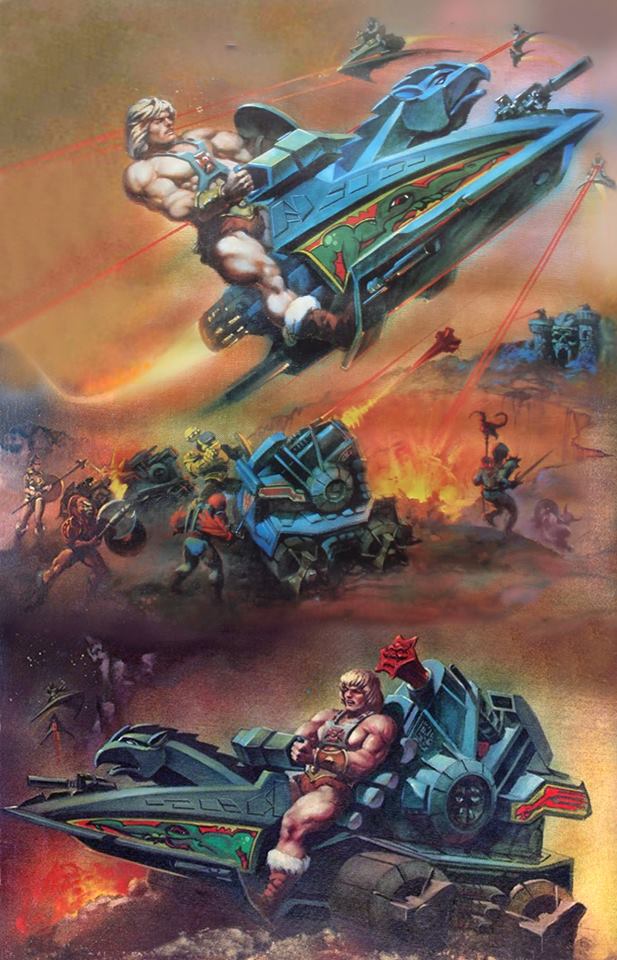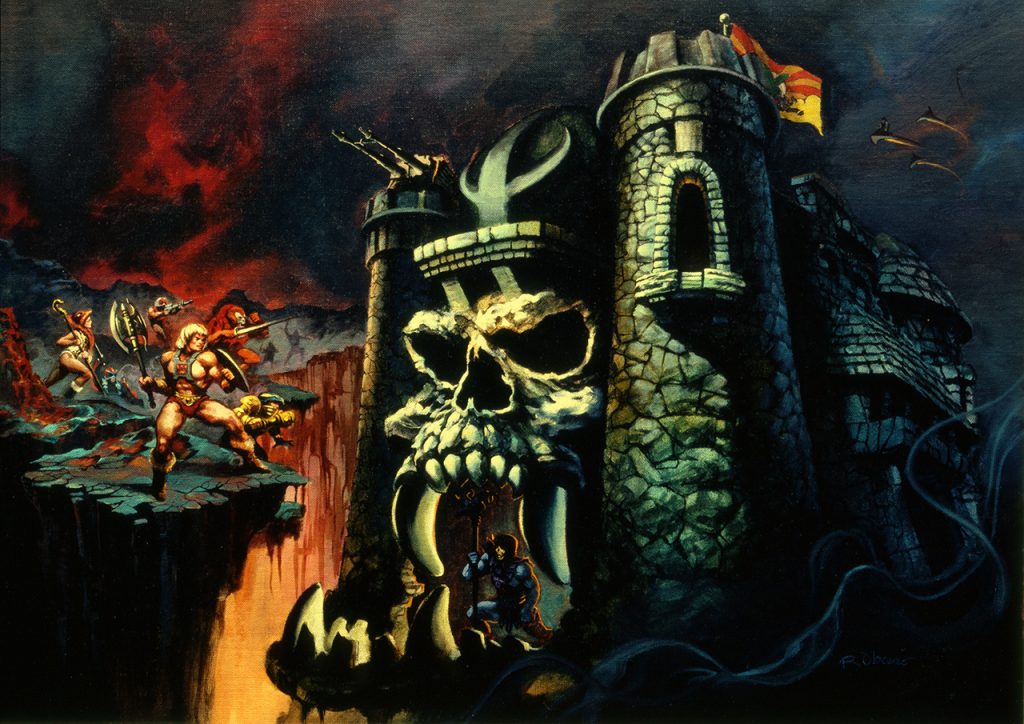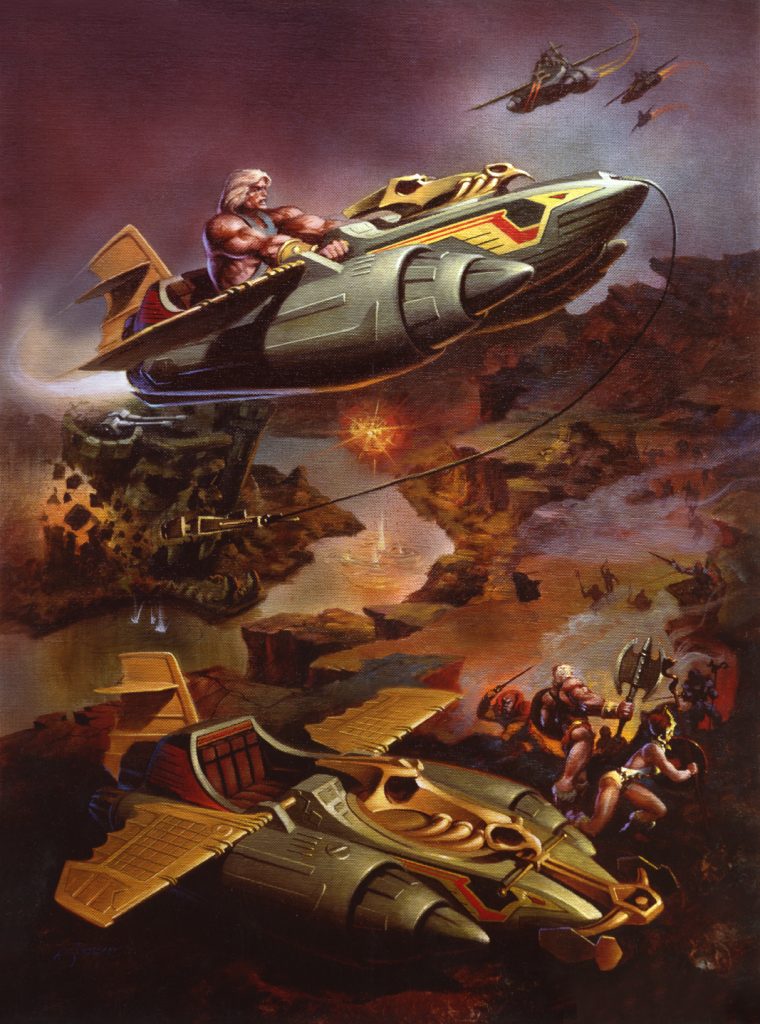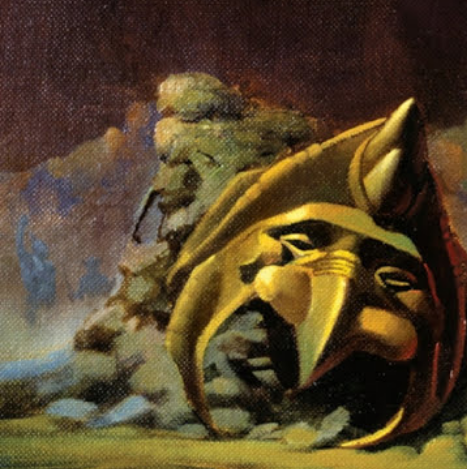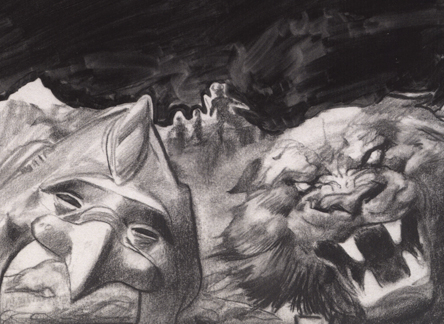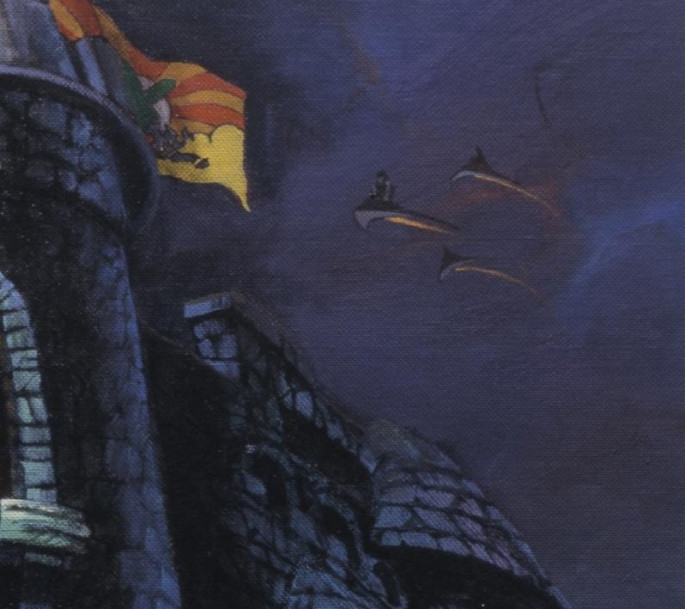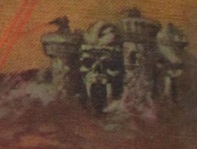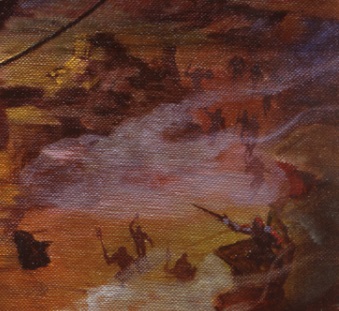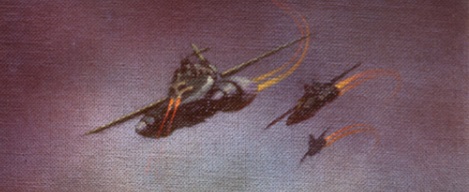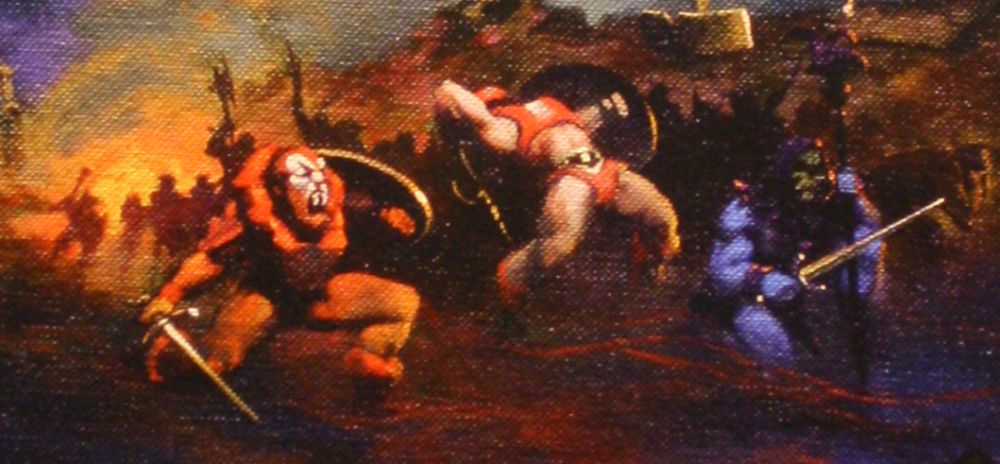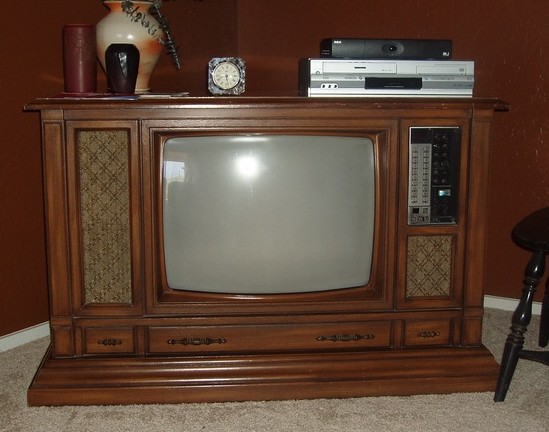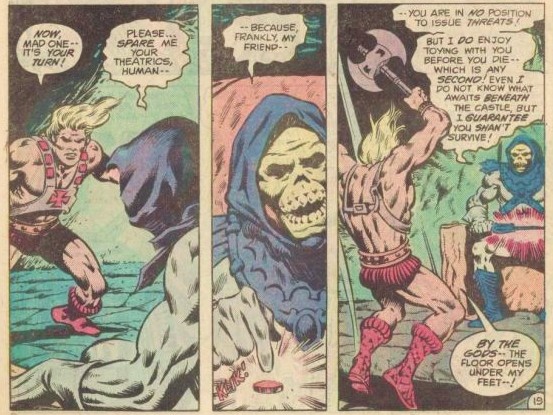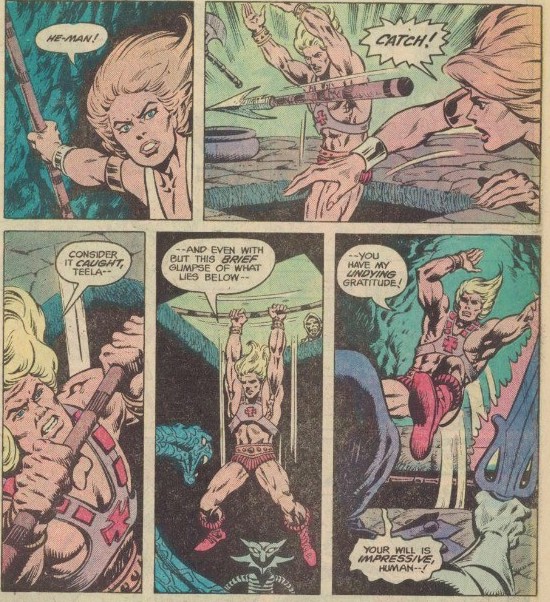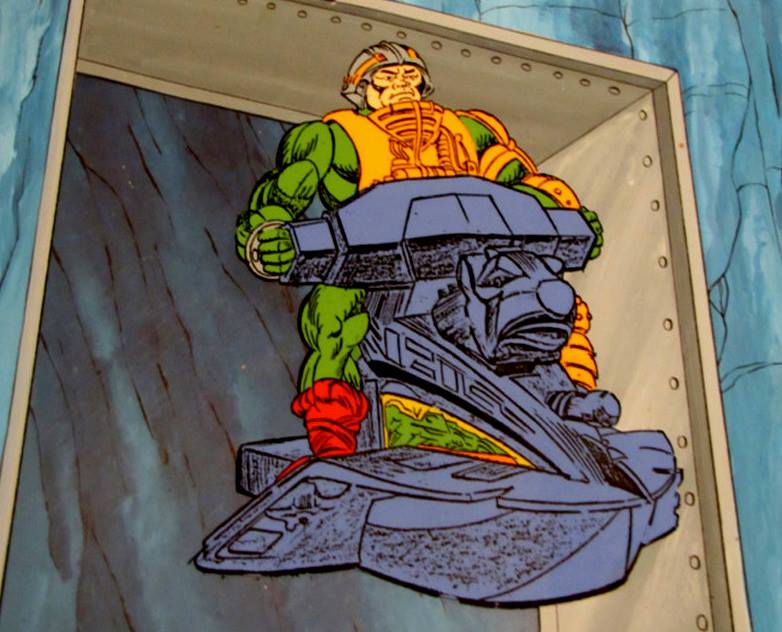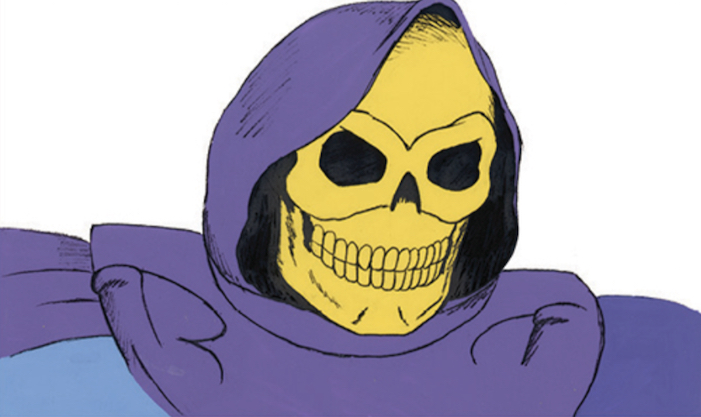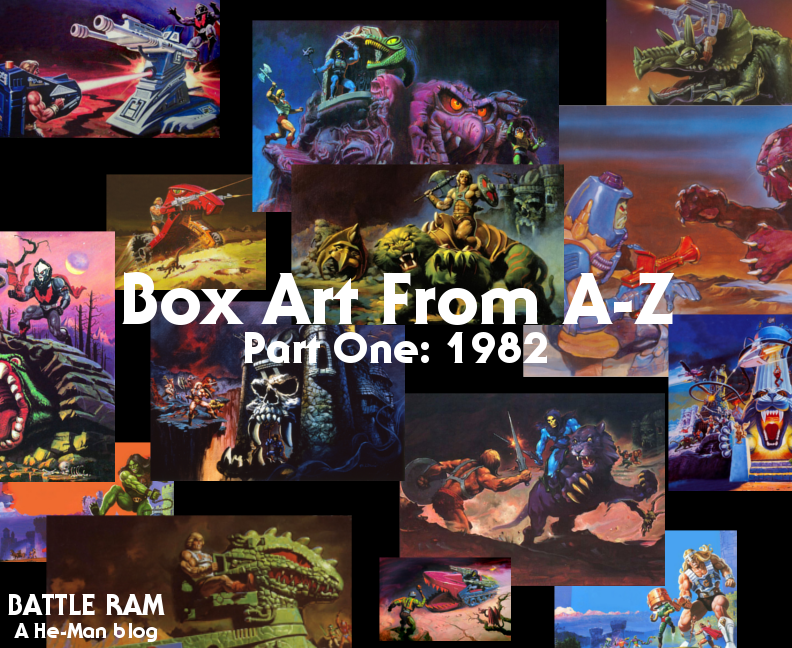
One of the best things about getting new He-Man toys as a kid was the box art. The toys were of course amazing and fun, but personally I spent almost as much time staring at the boxes as playing with the toys. I remember being pretty heartbroken when my mother made me throw away my Castle Grayskull and Battle Ram boxes. She saw them as clutter, but for me they were almost stories in and of themselves. You could see whole adventures unfolding in a single painted scene.
Unfortunately, good photographs or scans of the original art are not available for every piece. If you happen to have a nicer images than I do (higher resolution, better composition, etc), please do feel free to share, and I’ll make an update! For pictures of the packaging itself, a neutral (white or black) background is preferred. High resolution scans of the artwork, where it appears without logos, would be ideal. Bottom line – if you have better images than I do, please share them!
One final note: I’m defining box art as the front-facing painted artwork that appeared on boxed Masters of the Universe toys. The illustrations on blister card packaging, then, are outside the scope of this series.
Part One: 1982
Name: Battle Cat
Year: 1982
Artist: Rudy Obrero
Description: He-Man sits astride an unhelmeted Battle Cat, with his axe and shield at the ready. Castle Grayskull looms in the background, partially shrouded in mist.
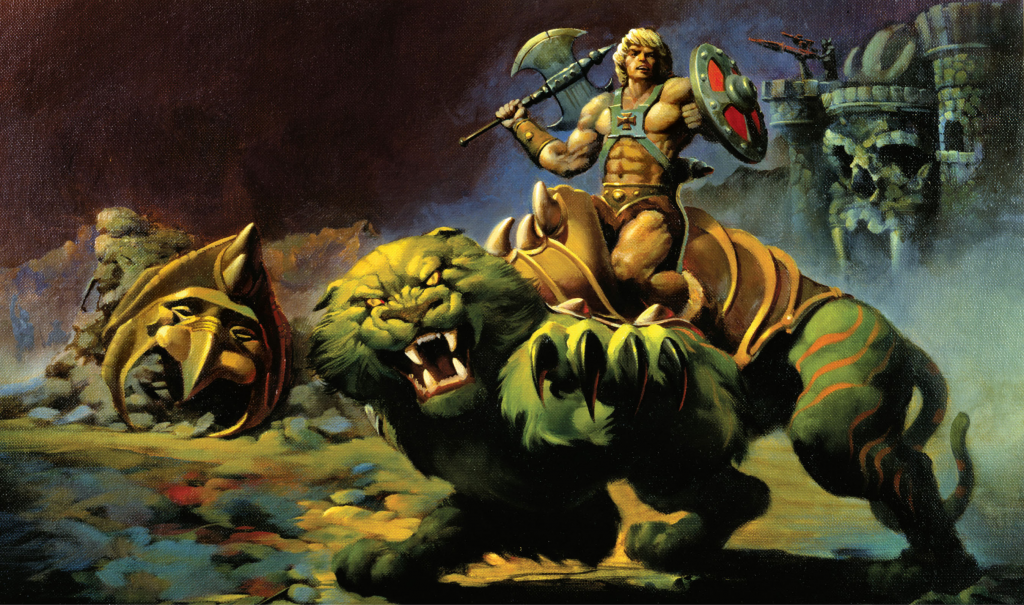




Name: Battle Ram
Year: 1982
Artist: Rudy Obrero
Description: Due to the folded shape of the box, this piece of artwork is in two sections. In the top two thirds of the artwork, He-Man flies the front half of the Battle Ram (Sky Sled) against enemies on similar flying vehicles, while a battle rages below. Several back halves of Battle Rams are launching missiles. Skeletor, Beast Man, Stratos, Man-at-Arms and Teela are seen, along side a warrior with a horned helmet, and Castle Grayskull in the background. The bottom section of the artwork features He-Man navigating rocky terrain in the complete Battle Ram, as several evil Sky Sleds attack him from the air.

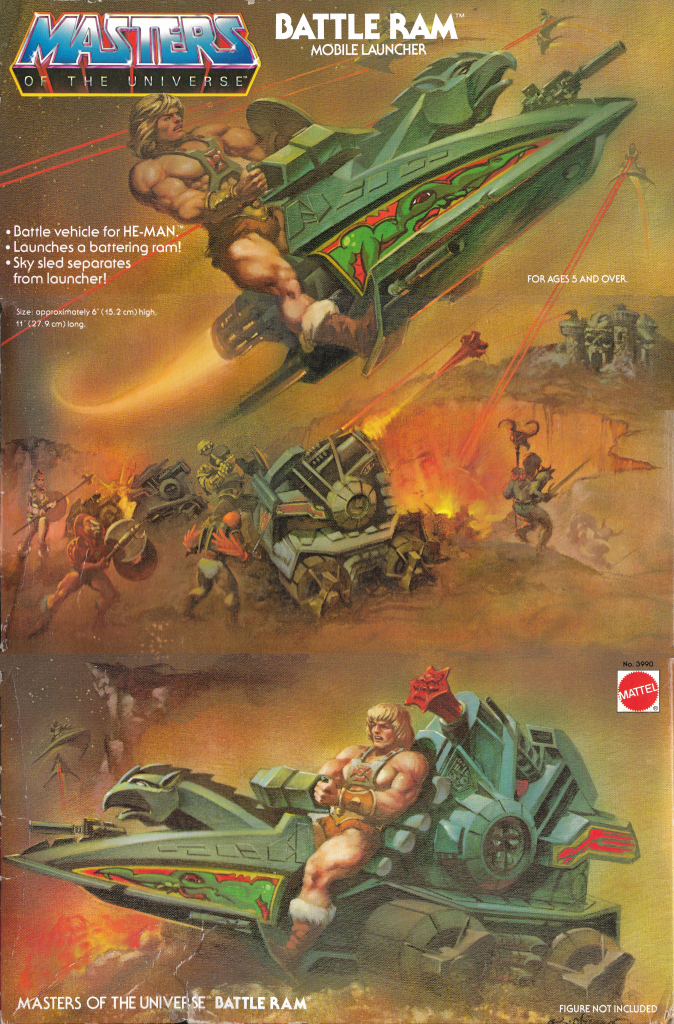



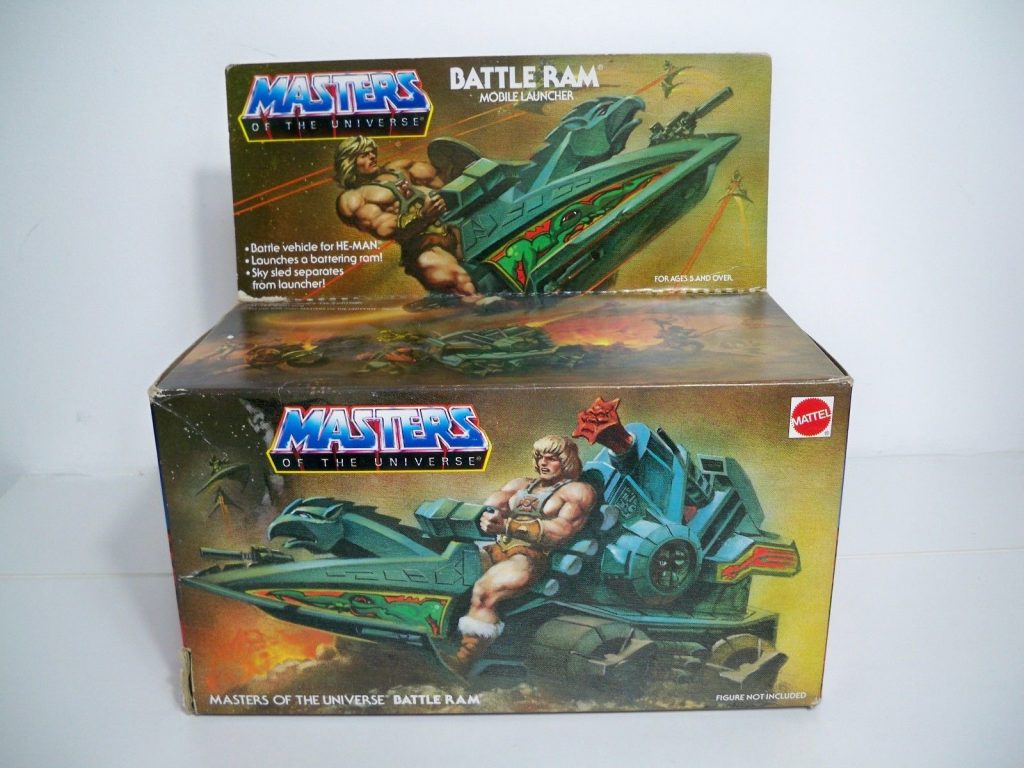
Name: Castle Grayskull
Year: 1982
Artist: Rudy Obrero
Description: Skeletor stands ready just inside Castle Grayskull, while He-Man, Teela, Man-At-Arms, Beast Man, Stratos and Zodac prepare to attack. Several Jet Sled-like vehicles fly overhead.





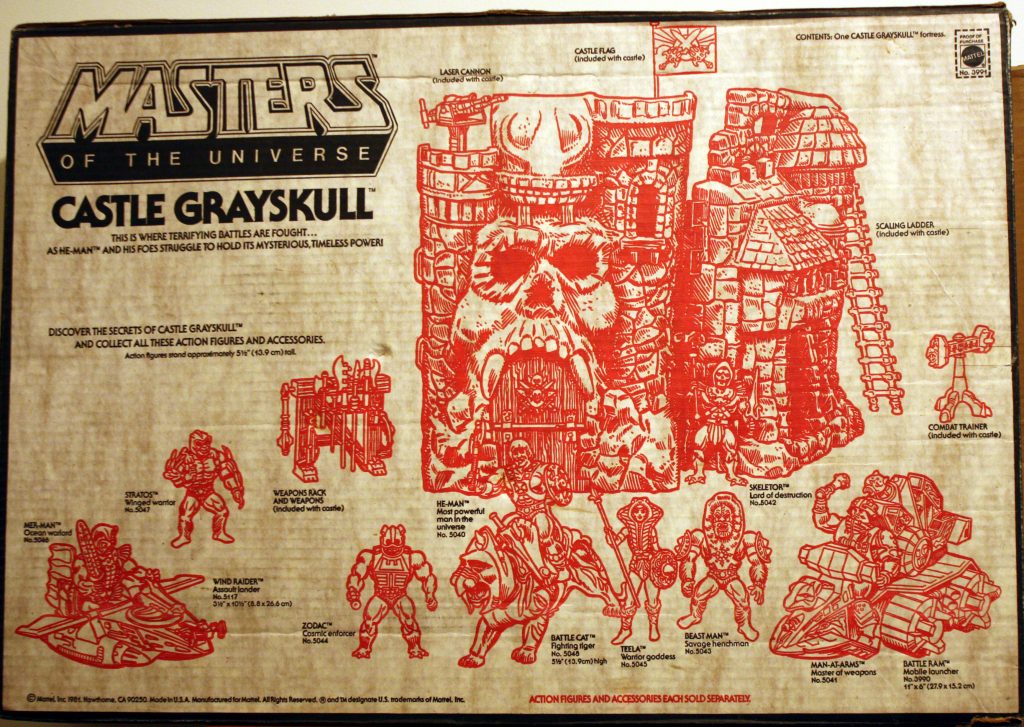
Name: He-Man and Battle Cat
Year: 1982
Artist: Rudy Obrero
Description: In a misty, rocky wasteland, He-Man rides Battle Cat into battle, accompanied by Man-At-Arms. Skeletor and Beast Man ride their own Battle Cats into Battle, accompanied by Mer-Man.



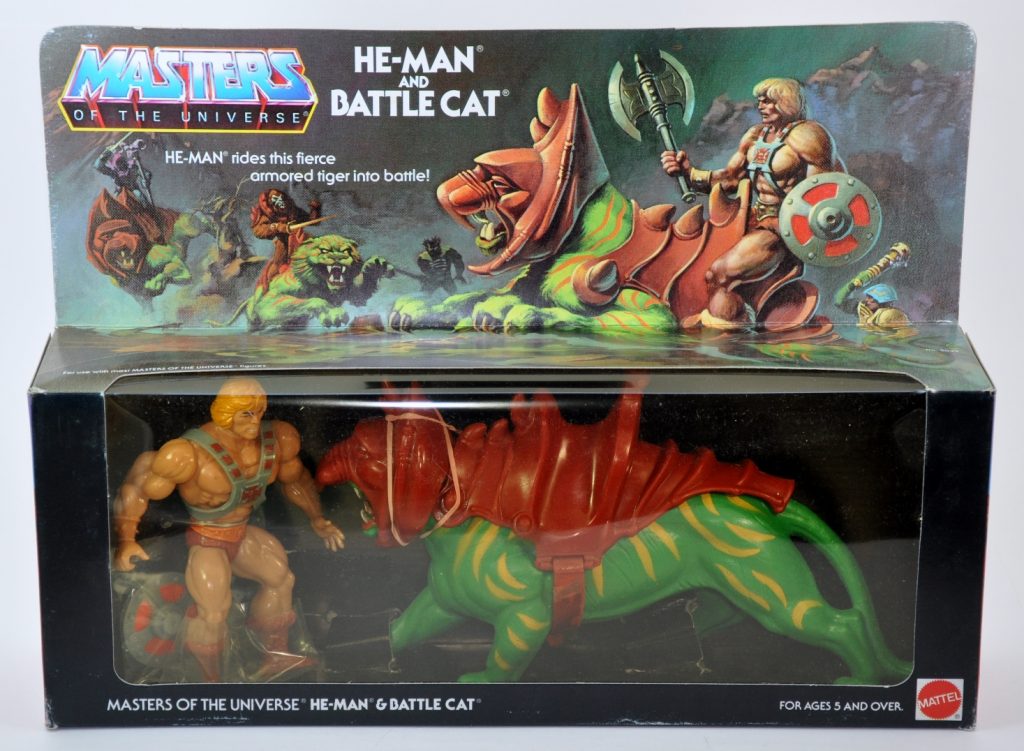
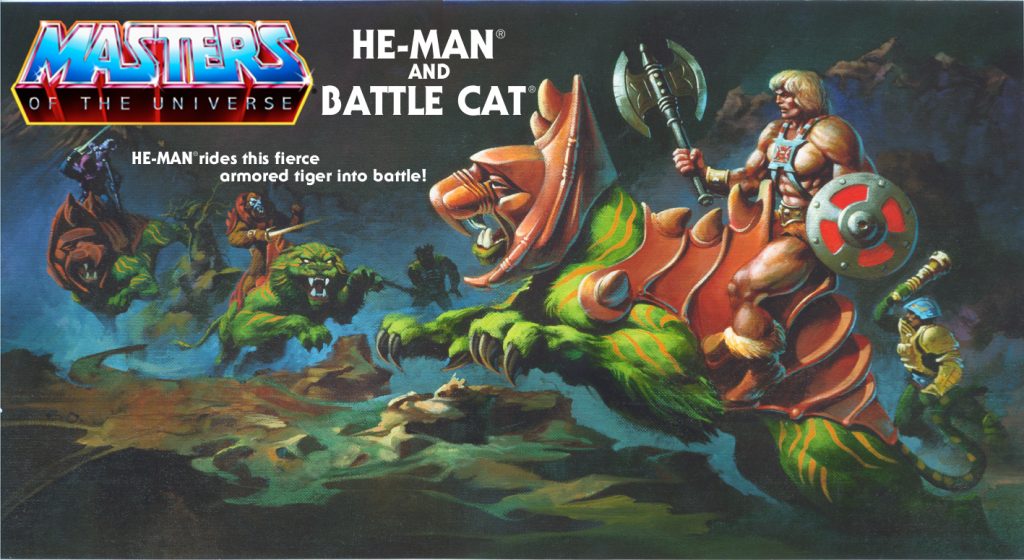

Name: He-Man and Wind Raider
Year: 1982
Artist: Rudy Obrero
Description: In a misty, rocky wasteland, He-Man pilots the Wind Raider against Skeletor, Beast Man, a mysterious warrior in red, and shrouded hordes of barbarian warriors. In the background, laser fire erupts from Castle Grayskull.
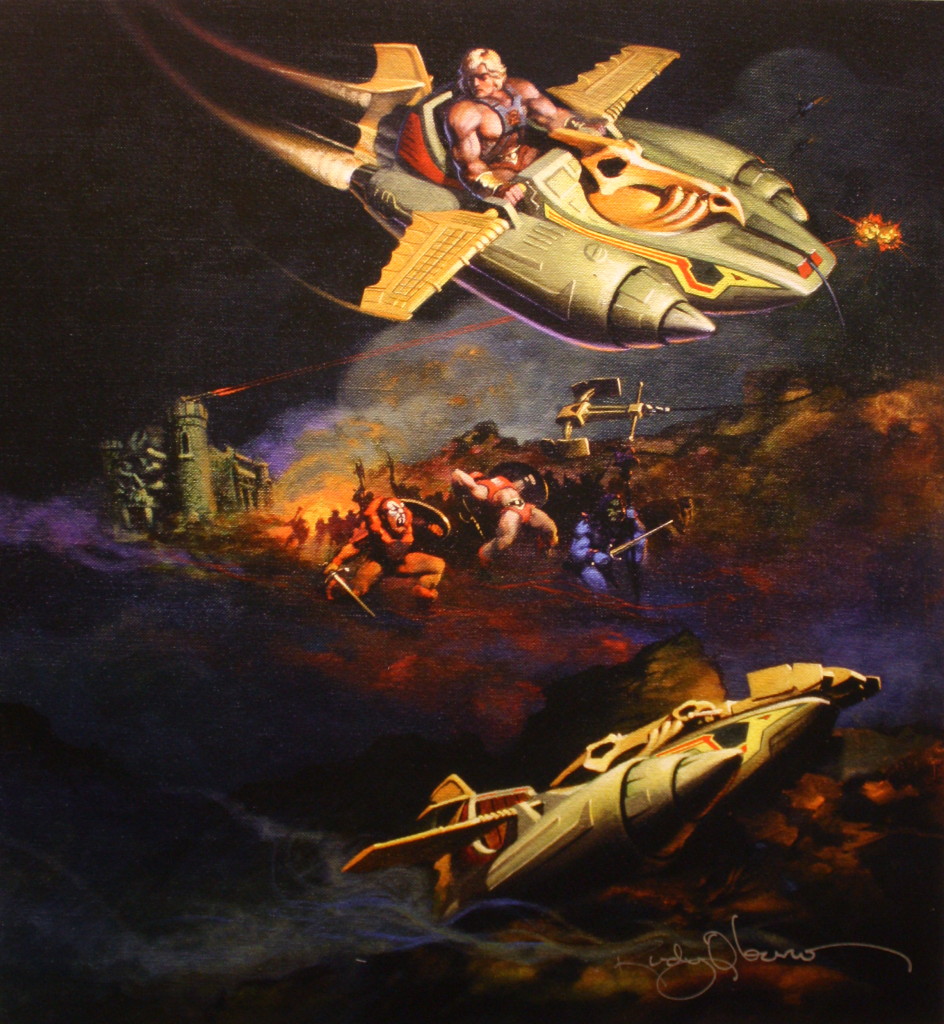



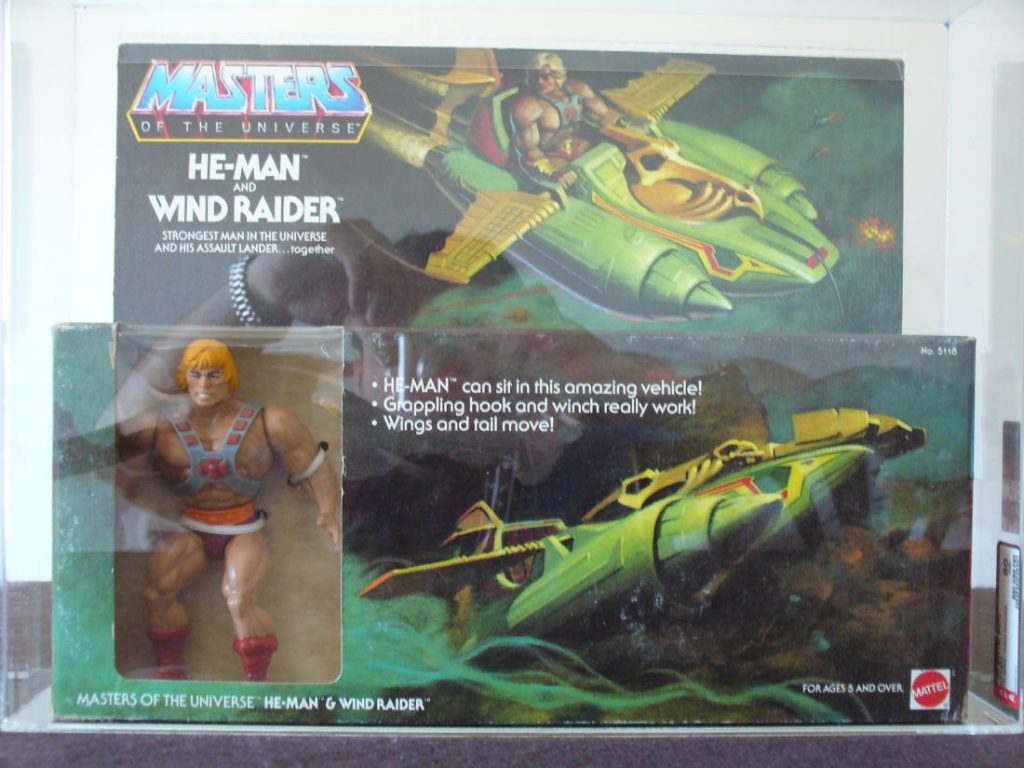
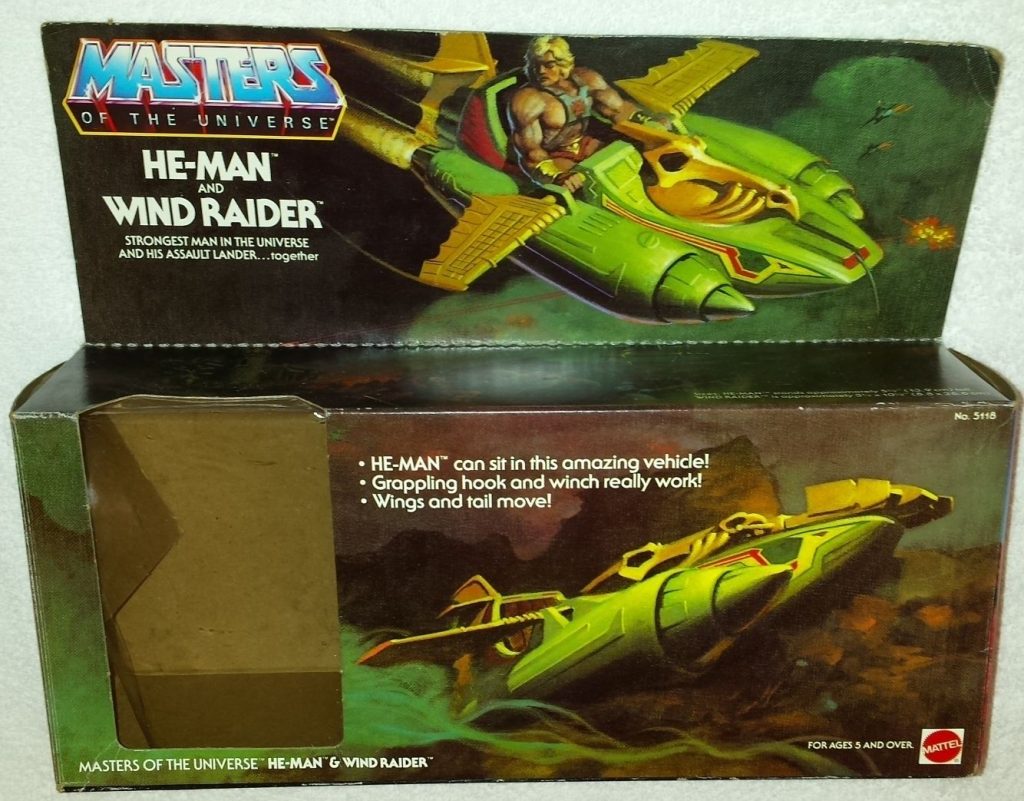



Name: Wind Raider
Year: 1982
Artist: Rudy Obrero
Description: Due to the folded shape of the box, this piece of artwork is in two sections. In the top half or so, He-Man uses the Wind Raider’s anchor to destroy a section of Castle Grayskull, while unknown enemies piloting their own Wind Raiders attack him. In the lower section of the artwork, the Wind Raider has landed, and He-Man and Teela battle against Skeletor, Beast Man, Stratos and hordes of unknown enemies.
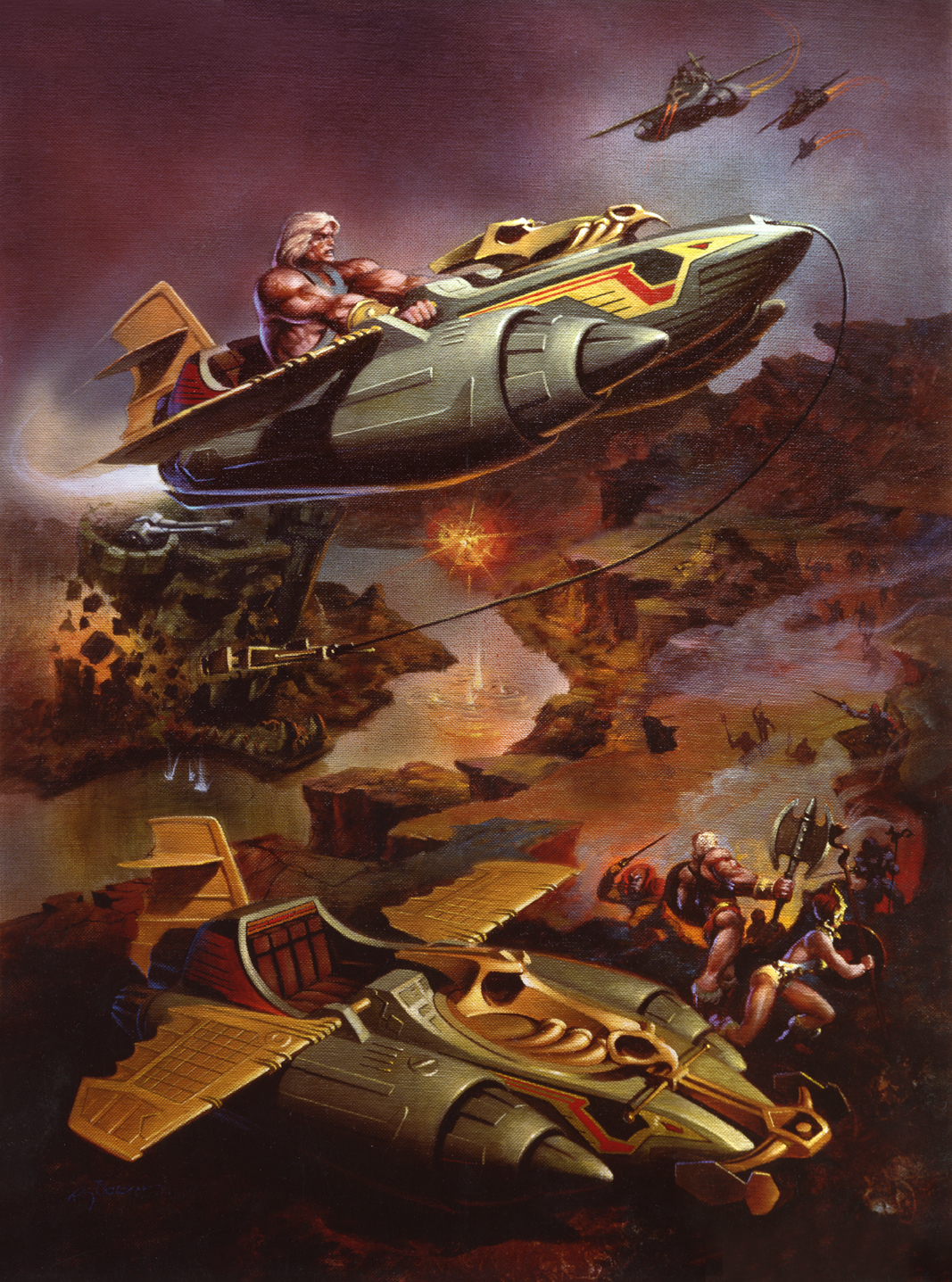
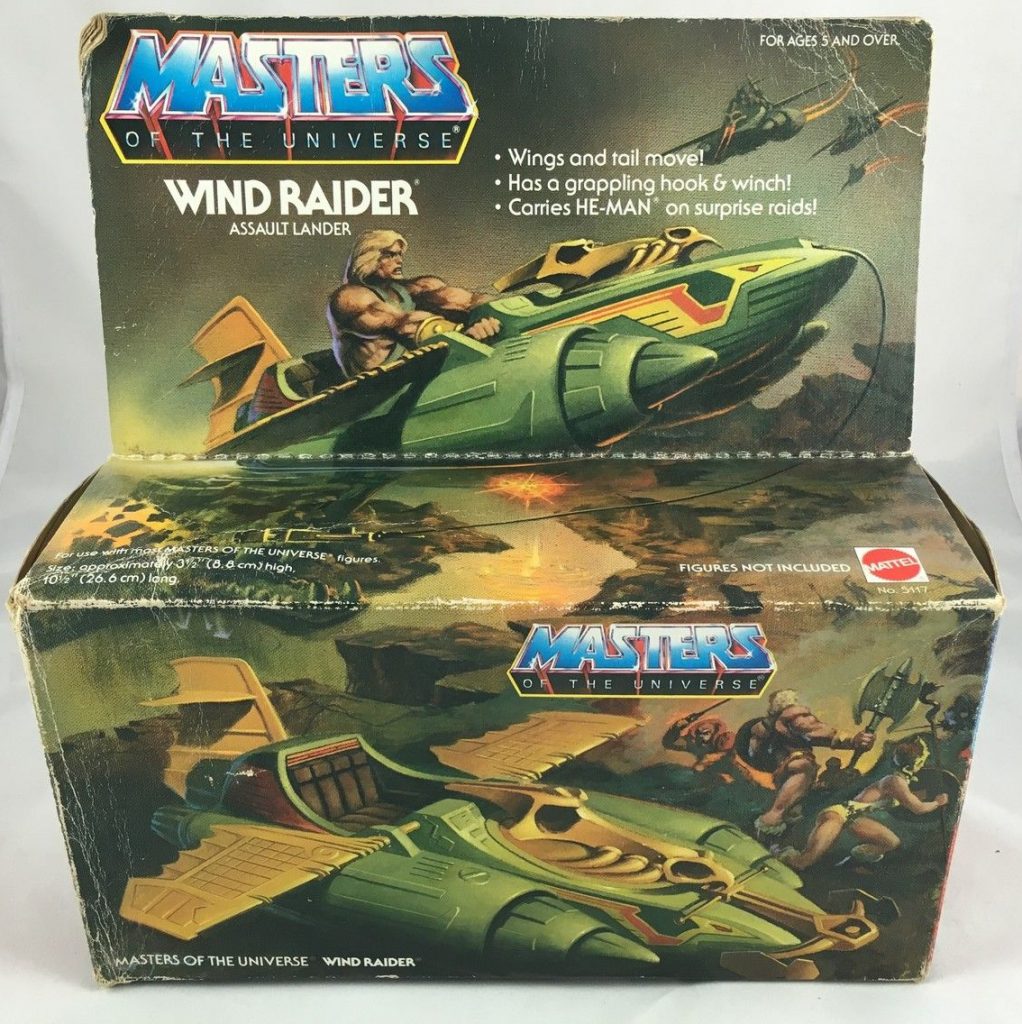
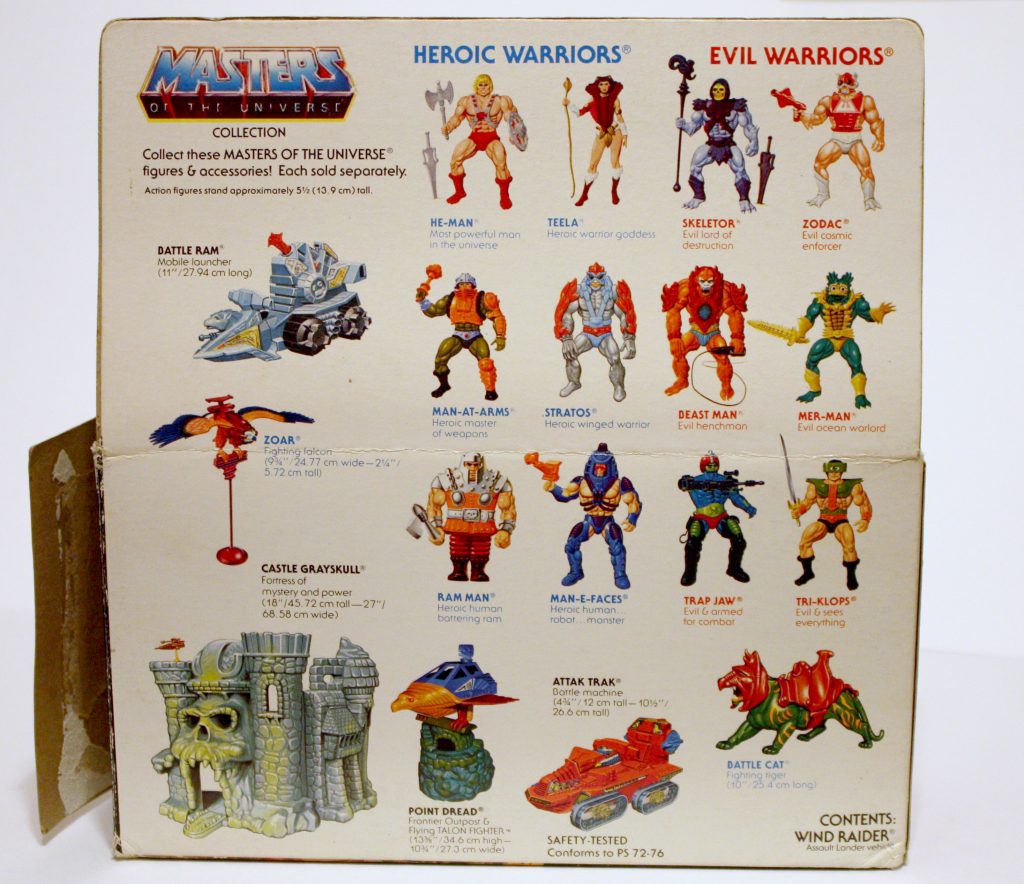
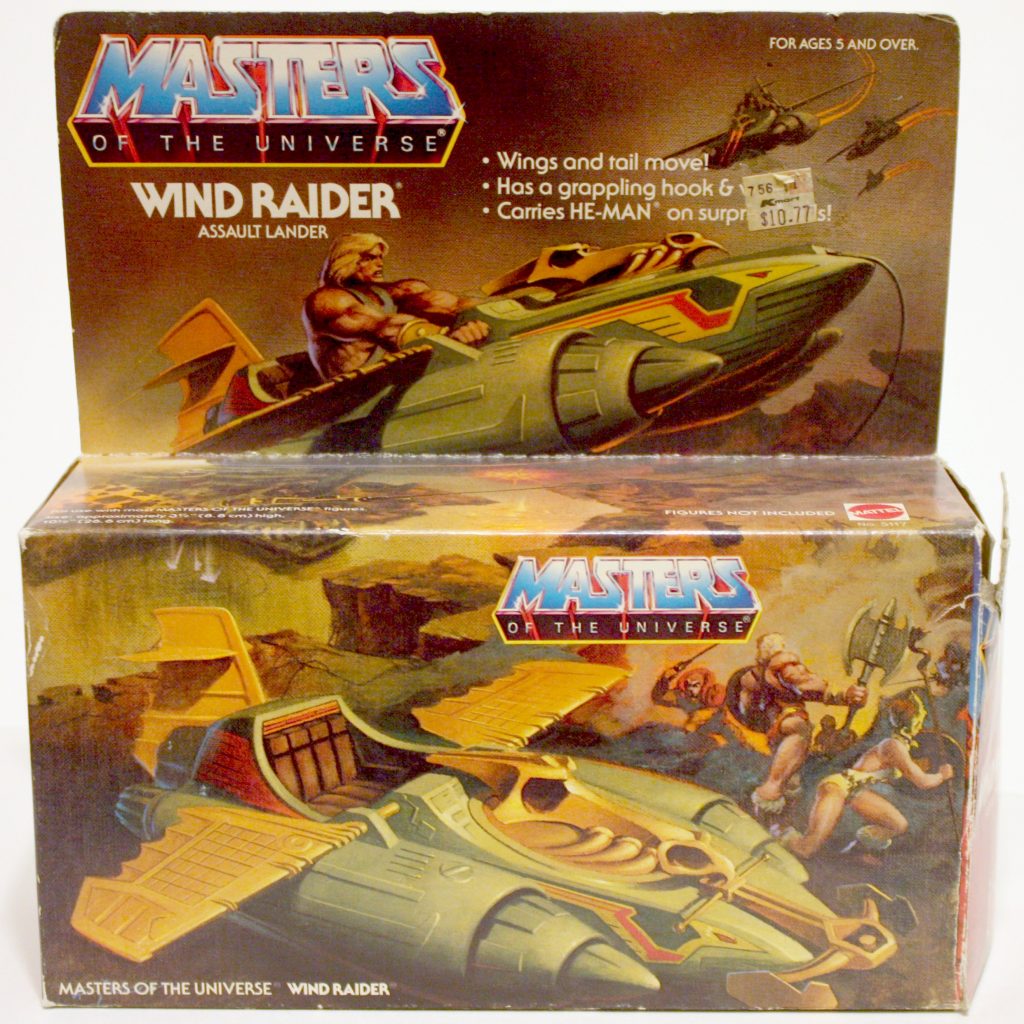
Articles in this series:
